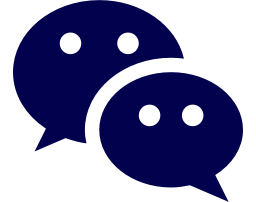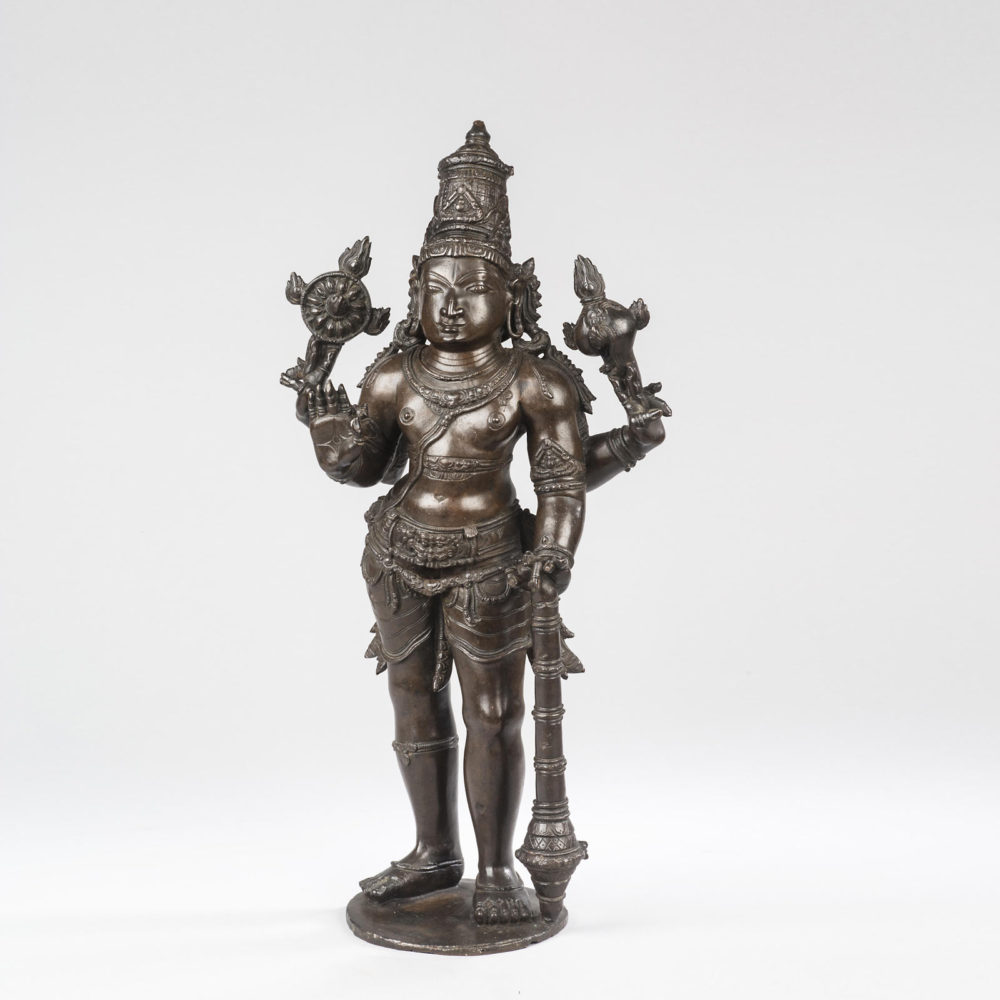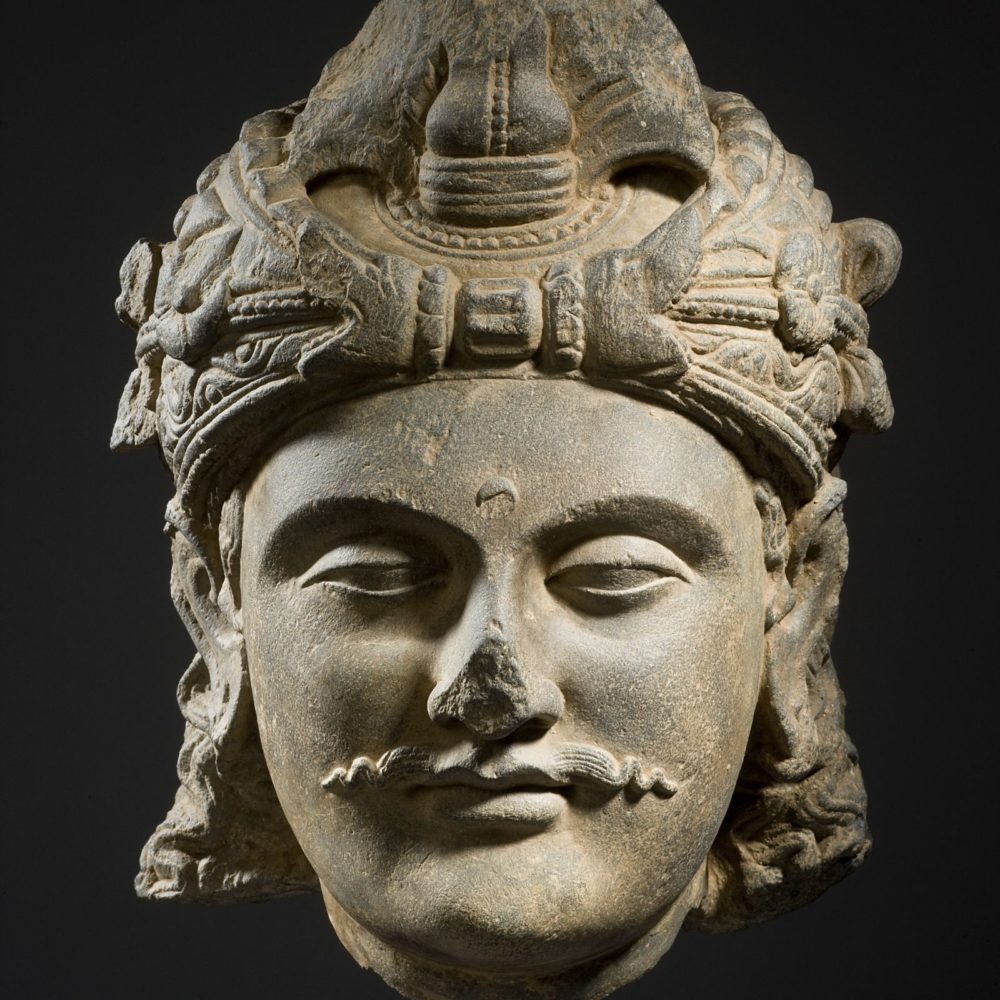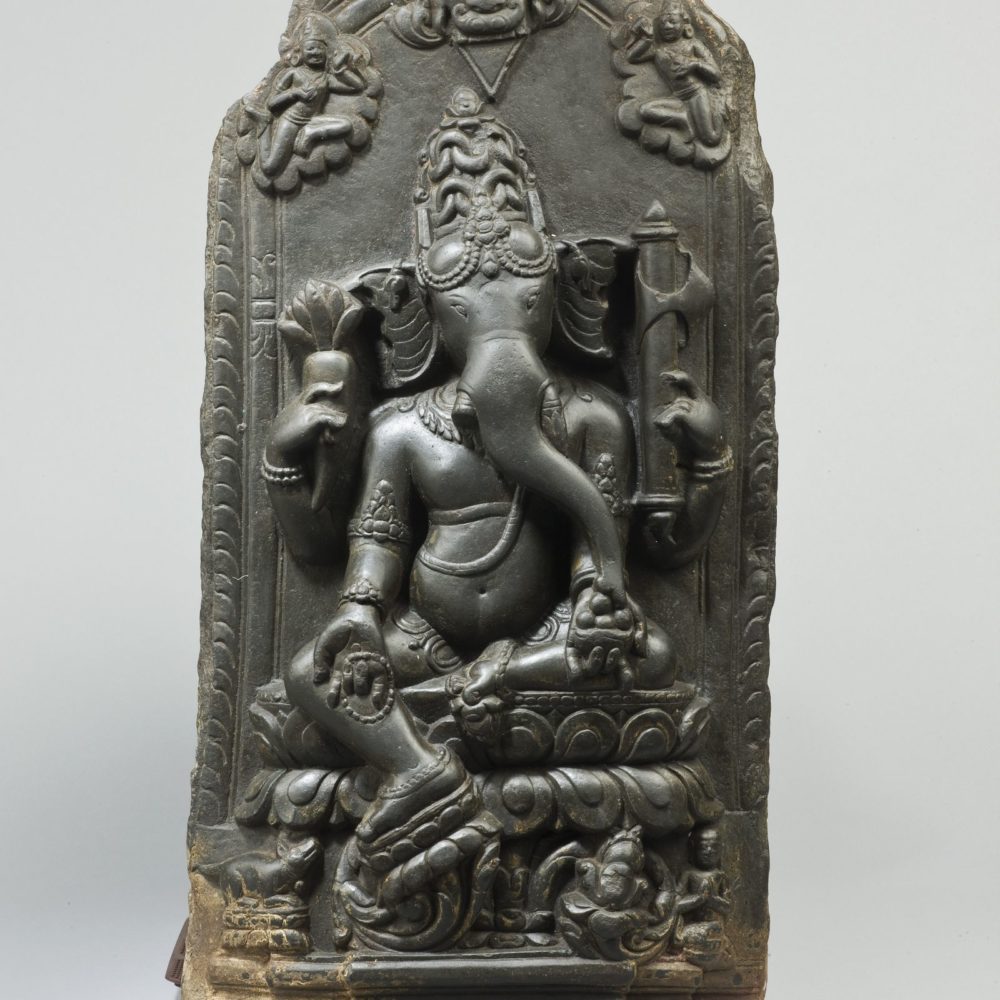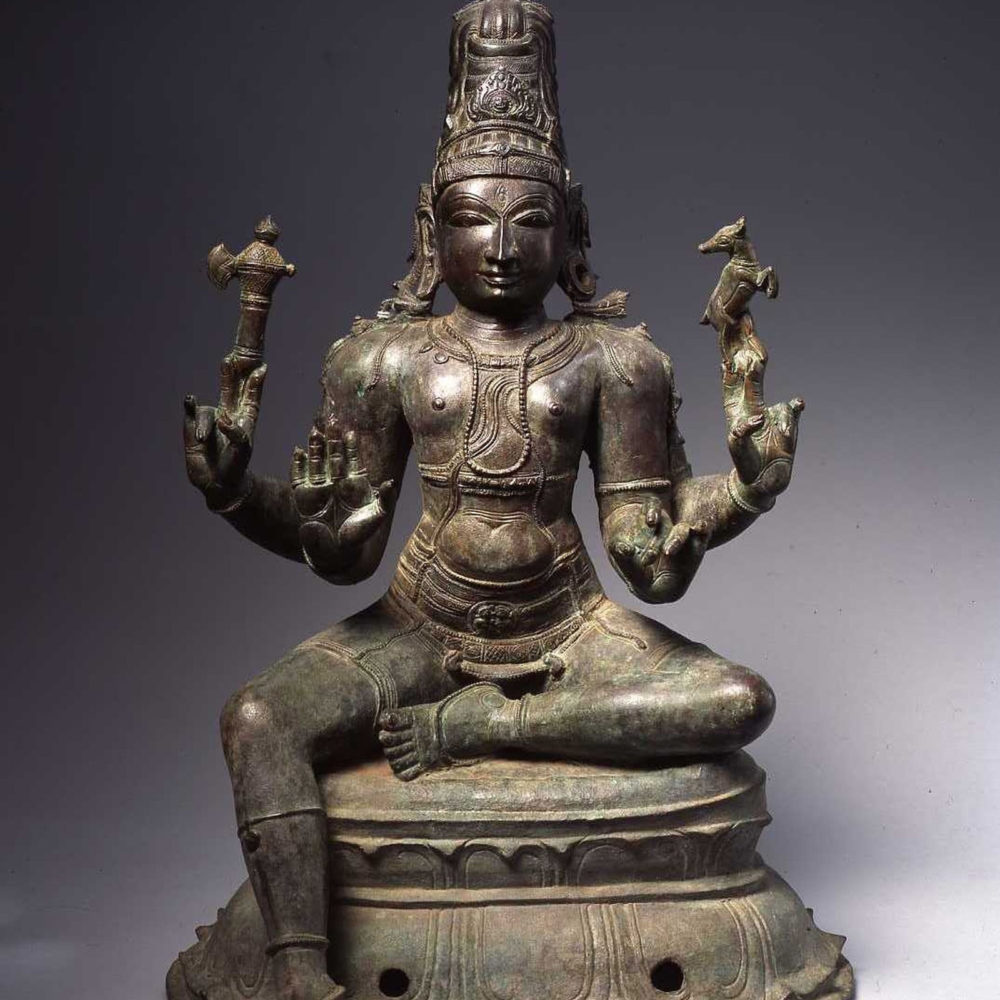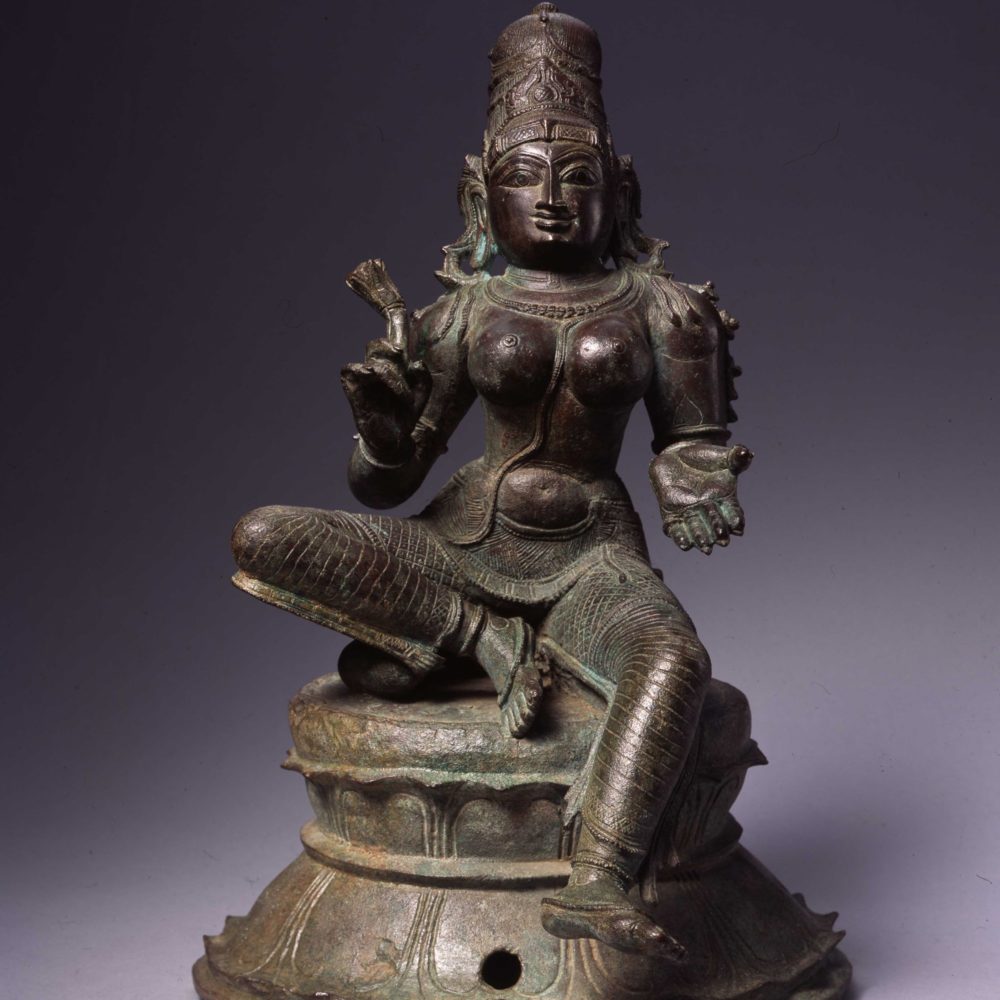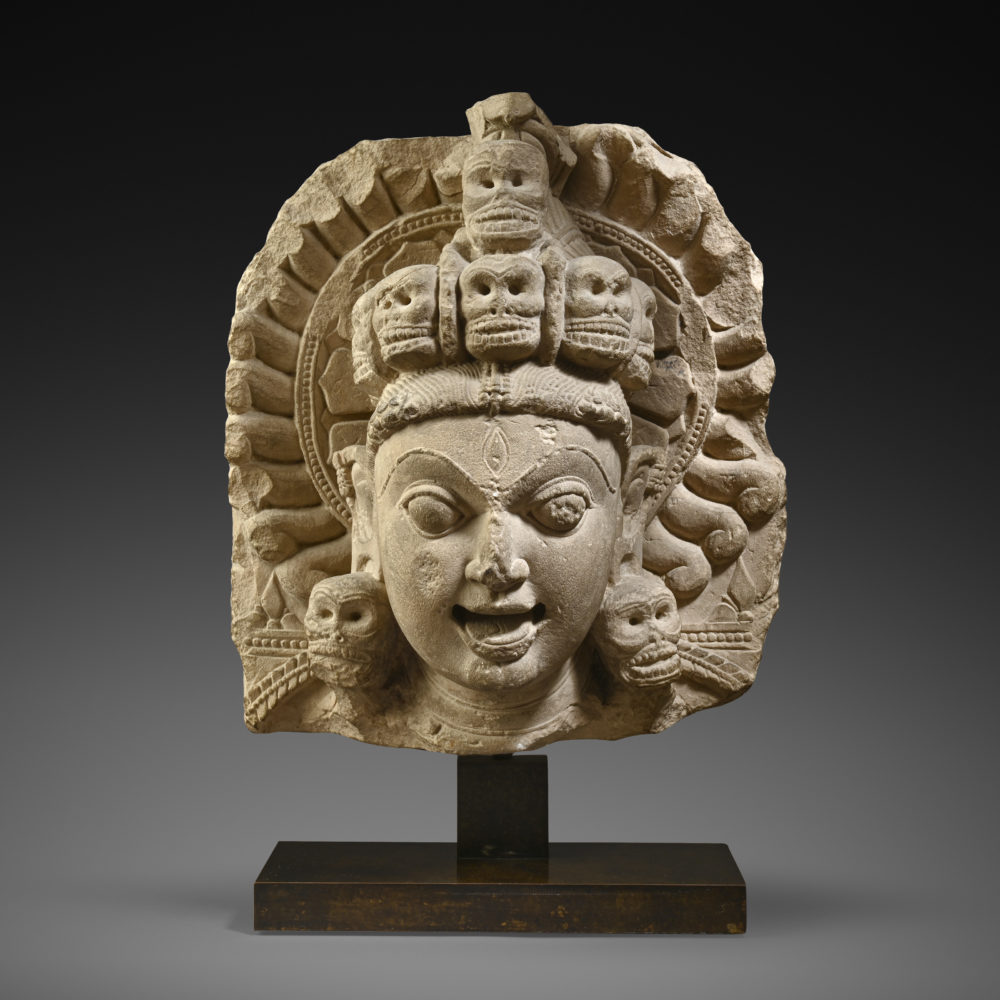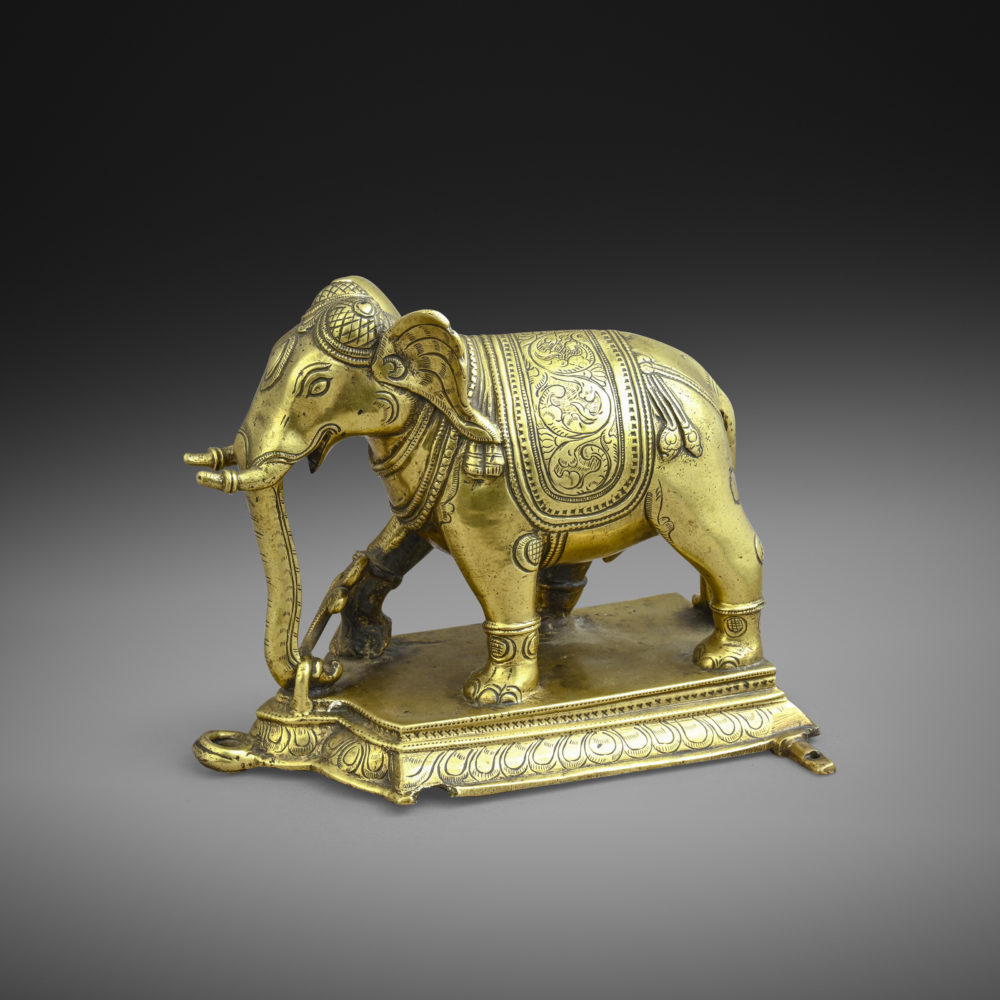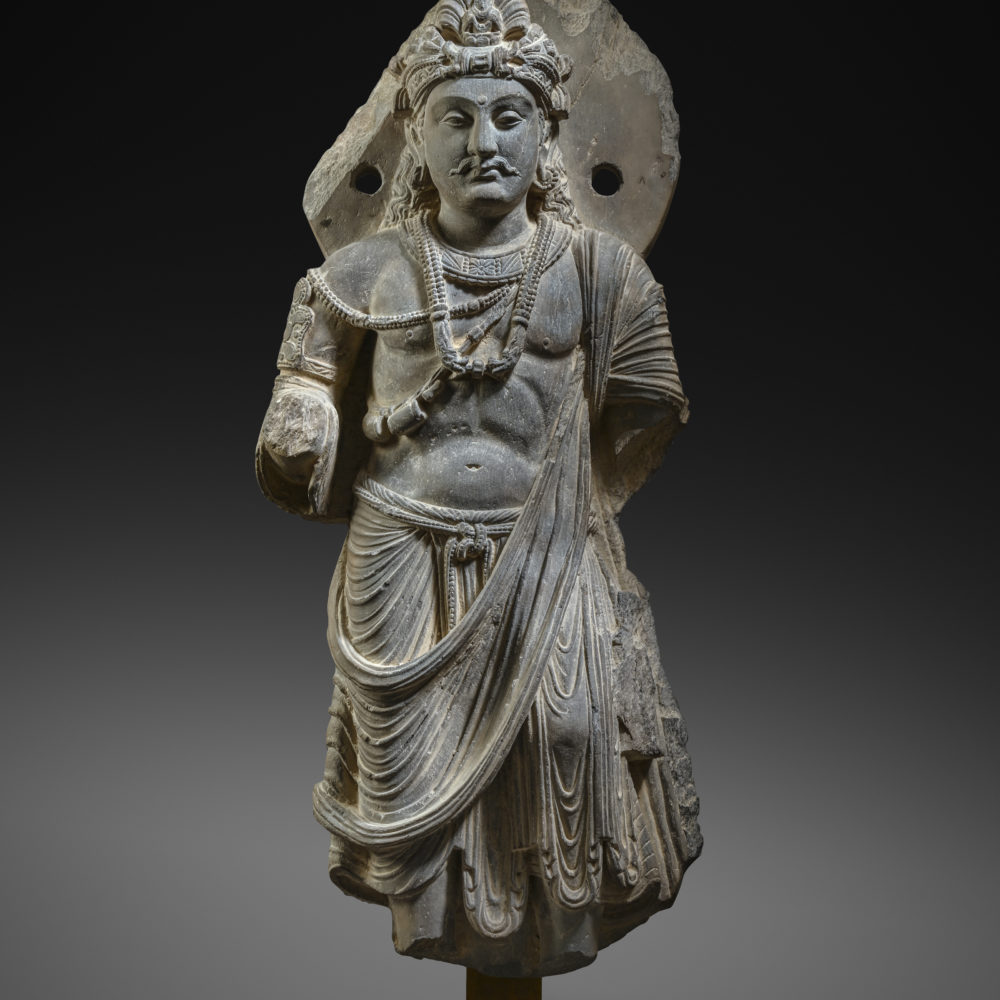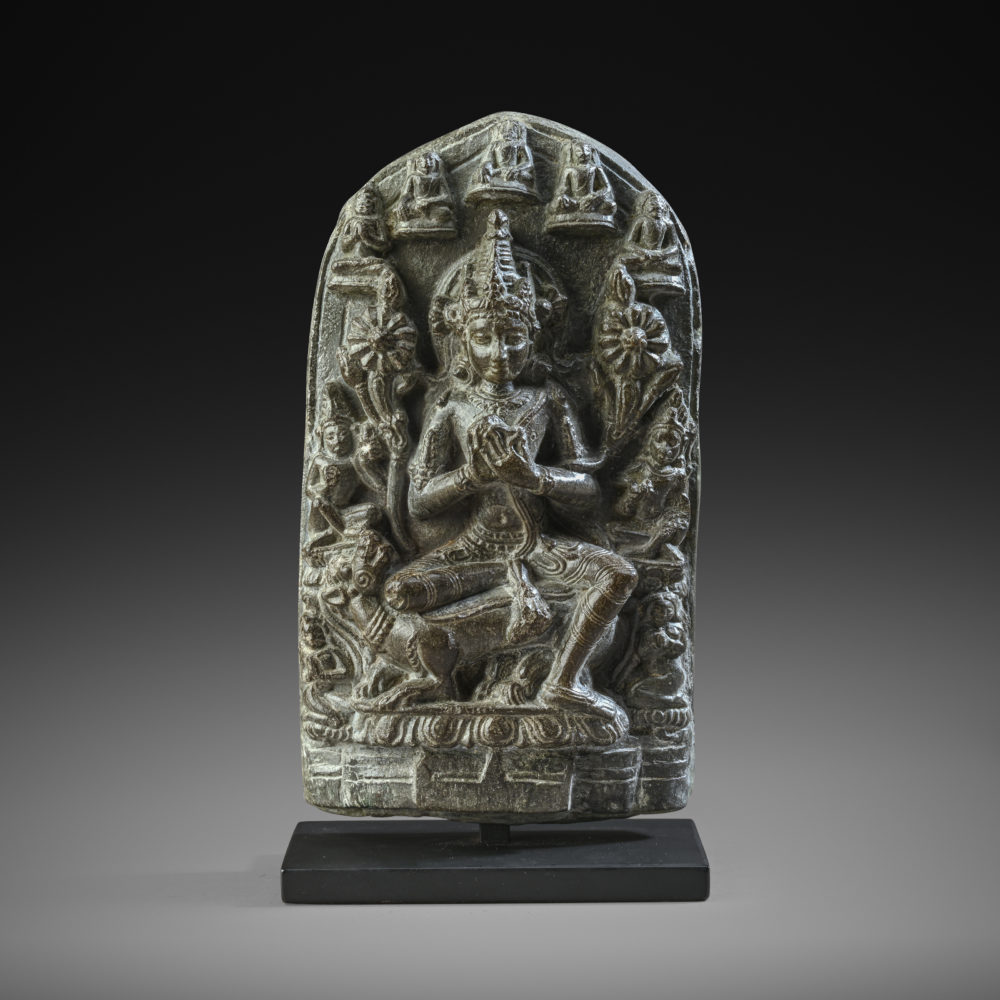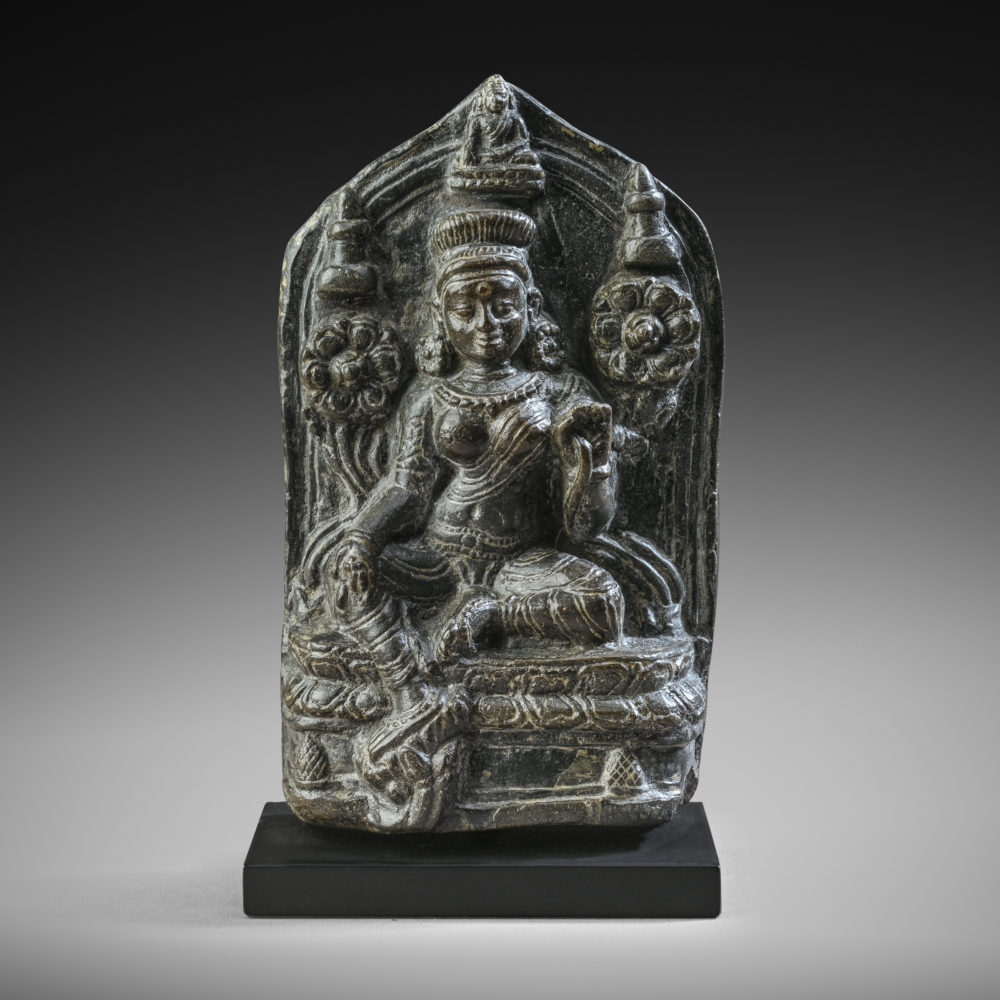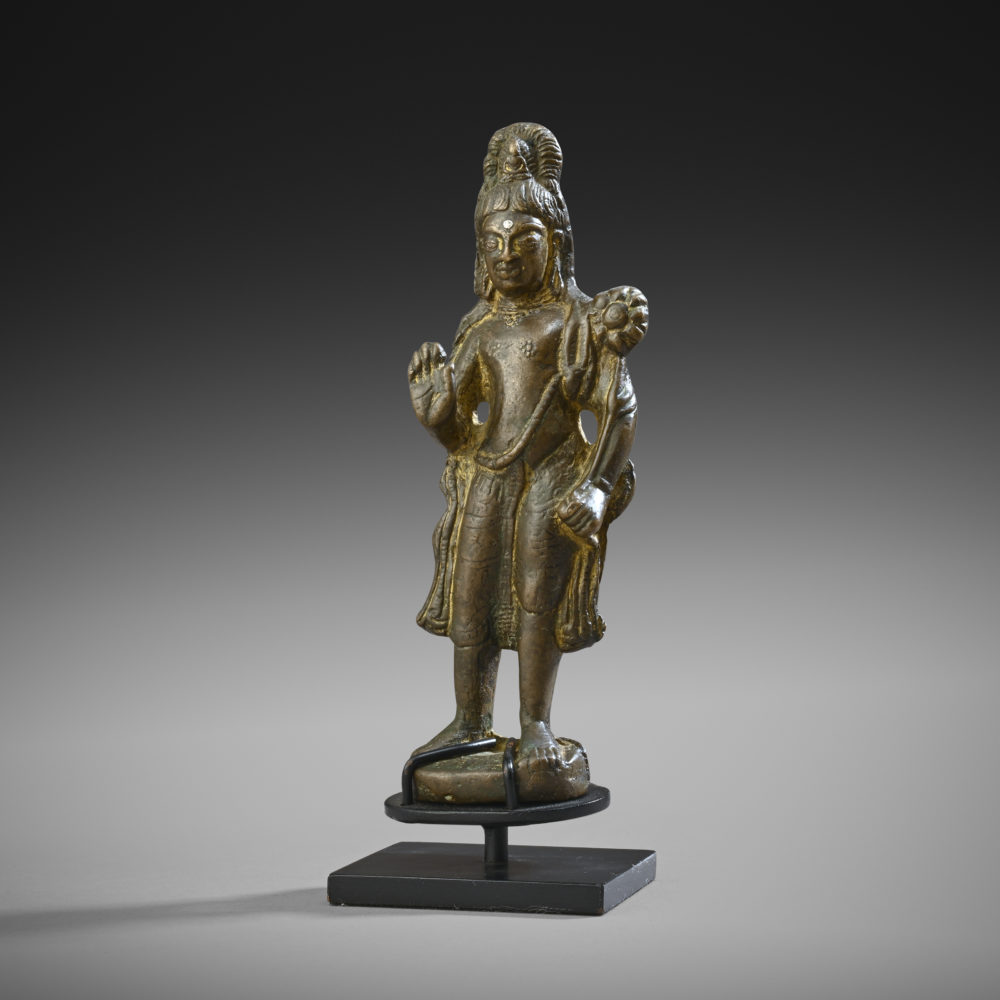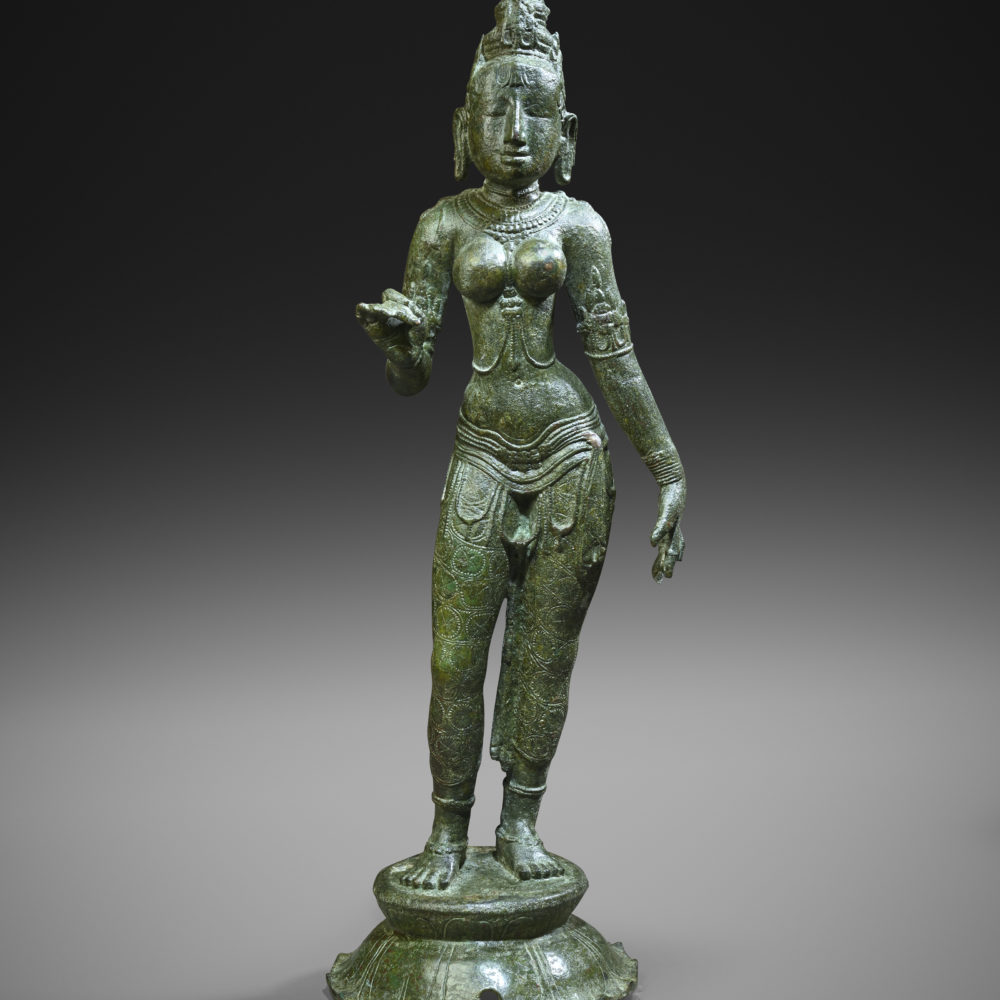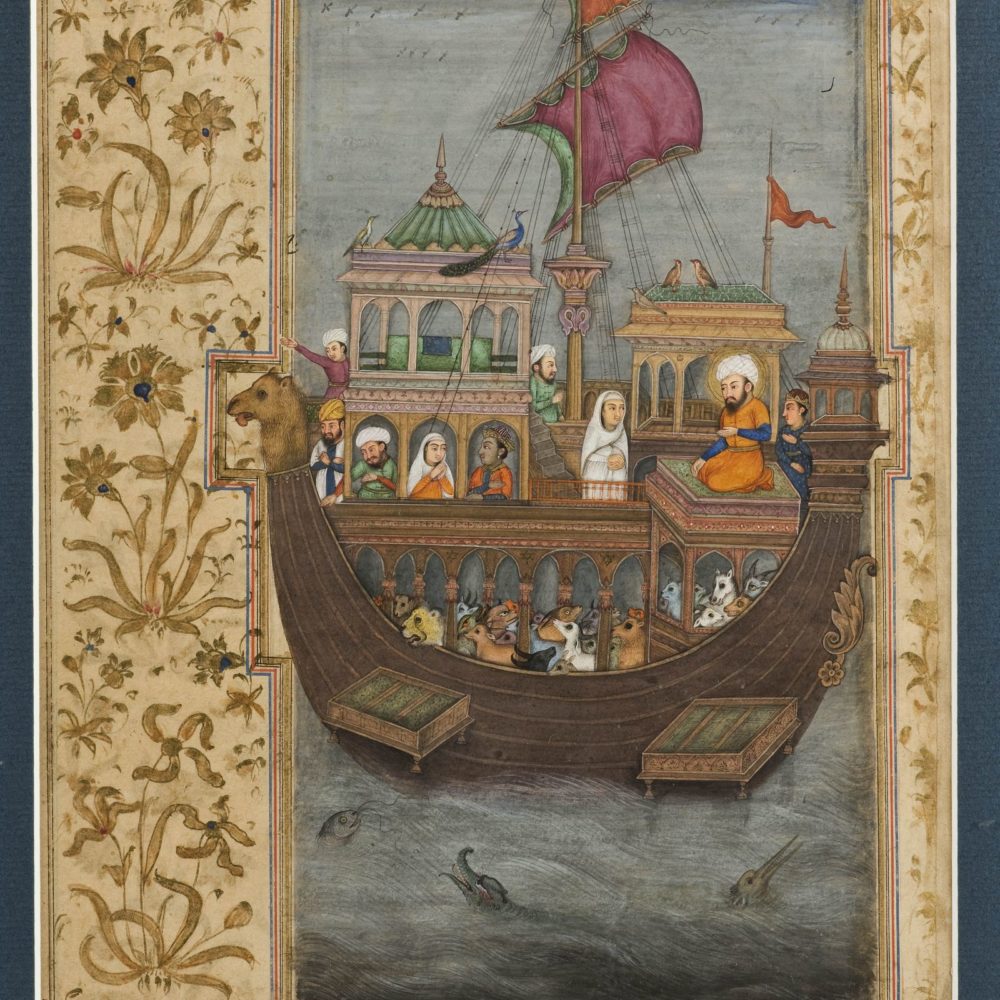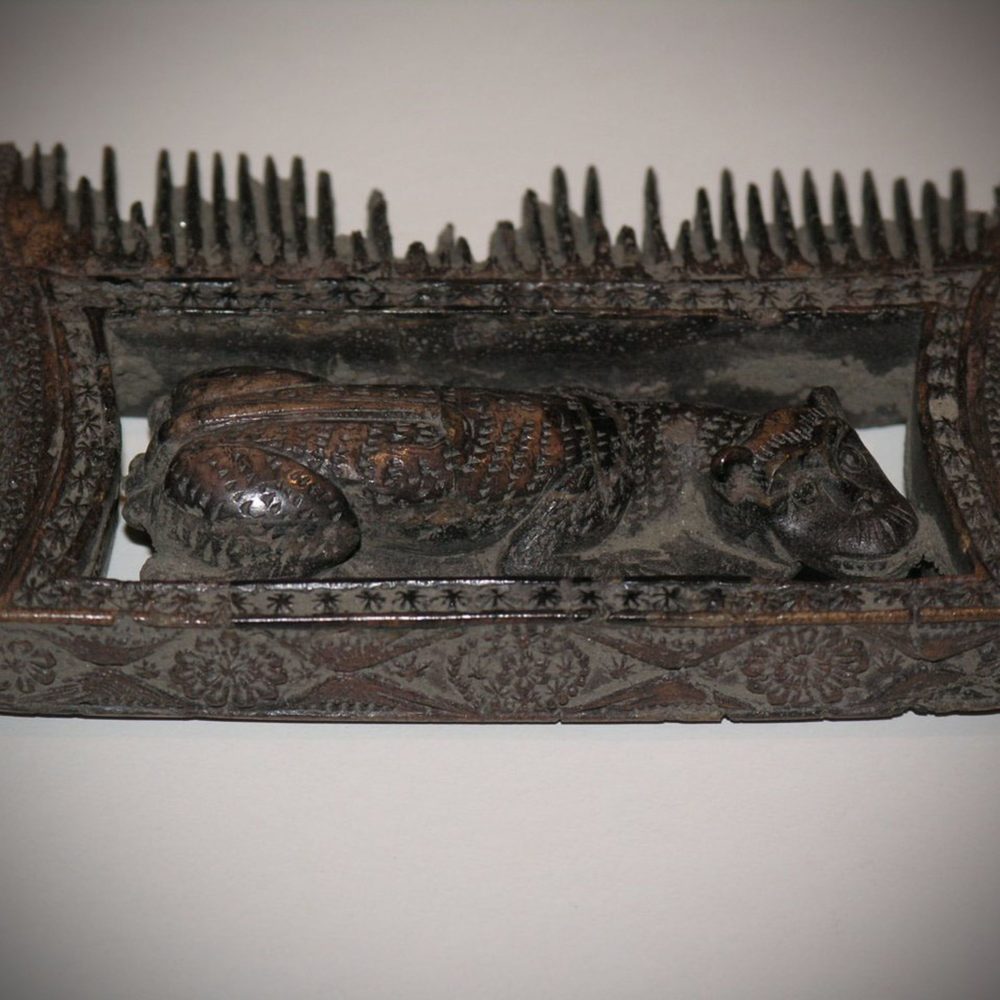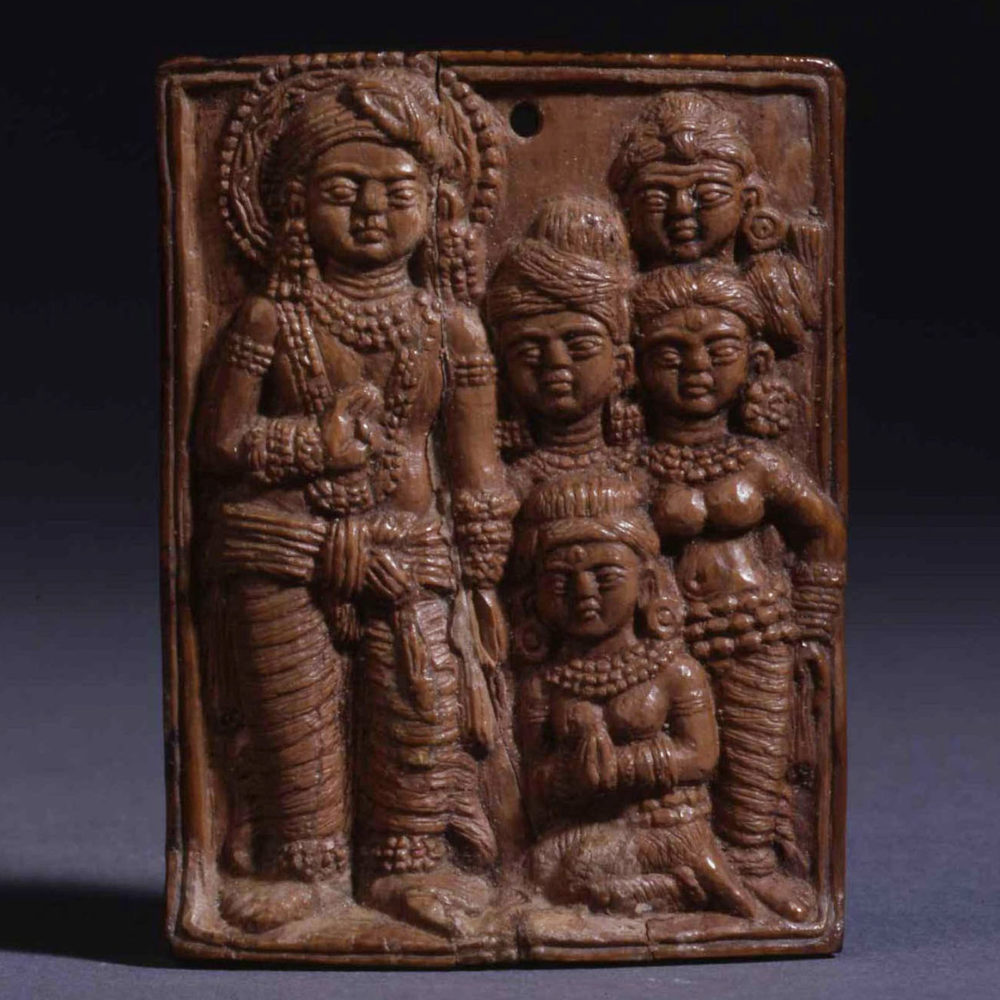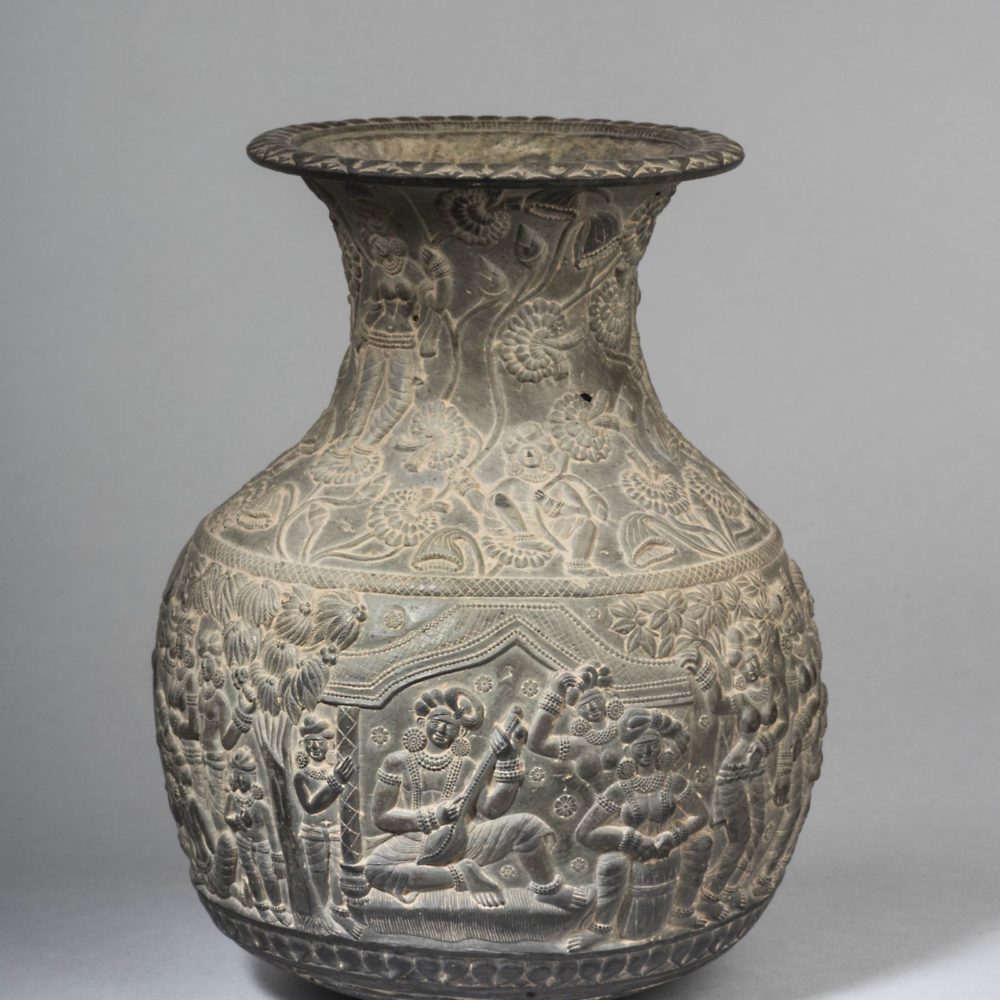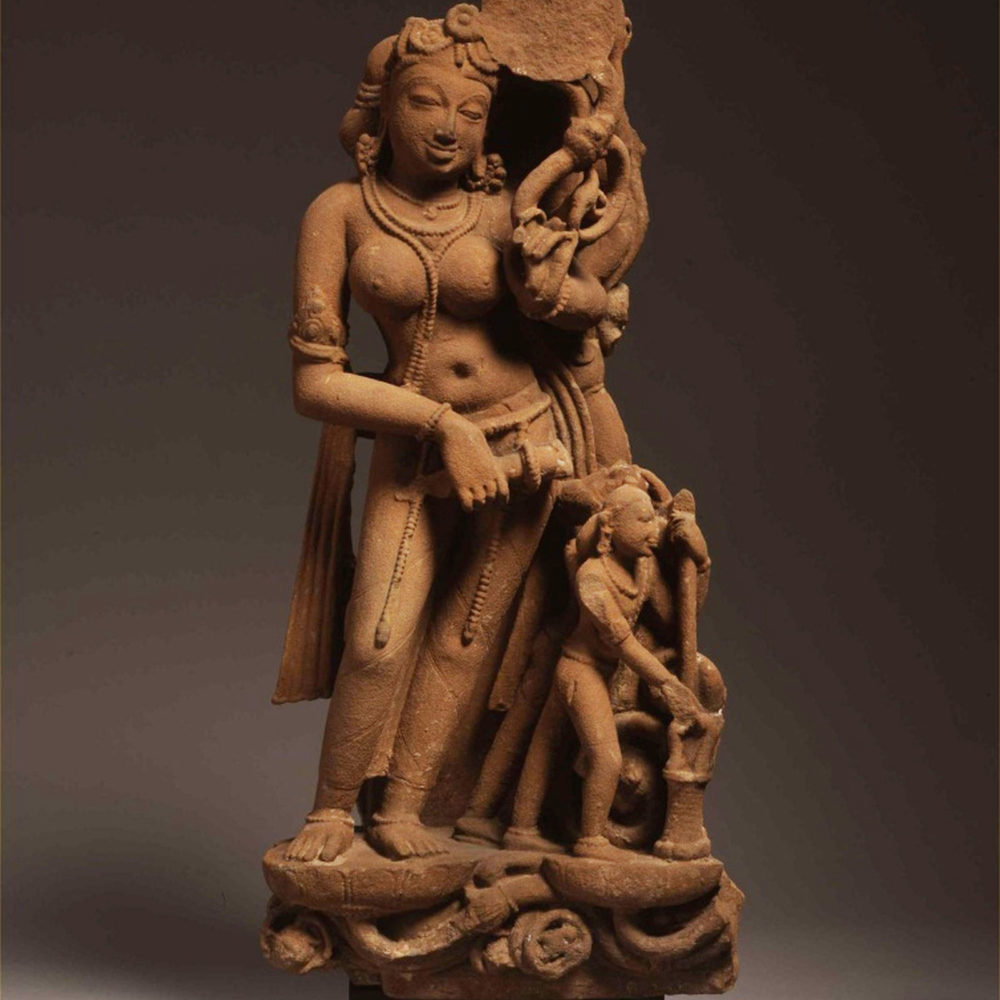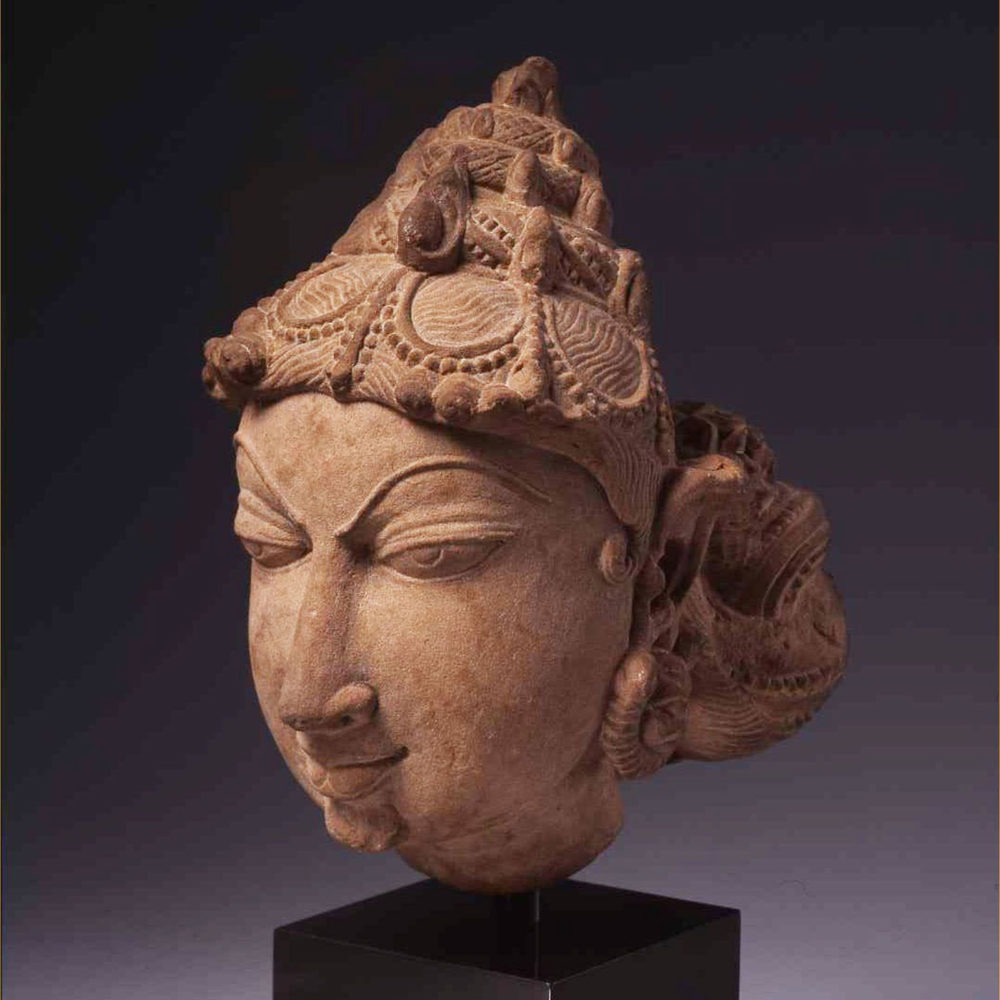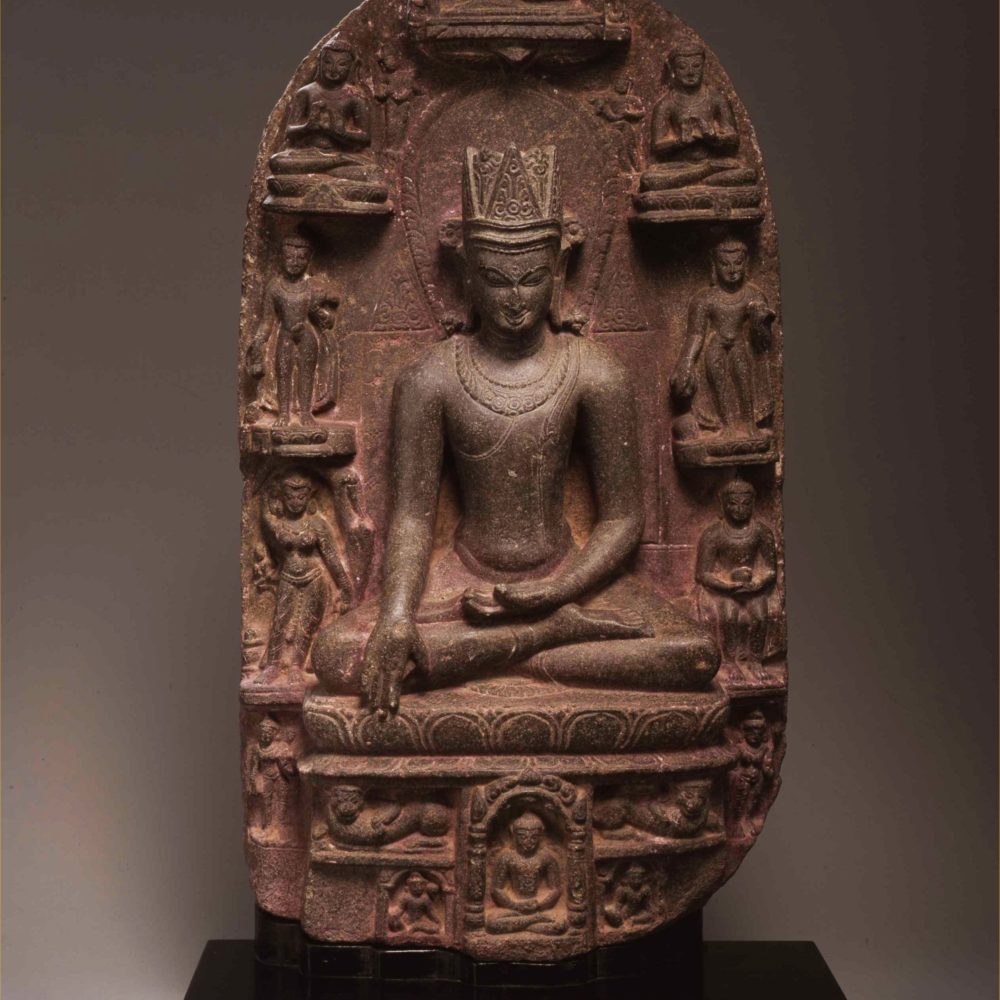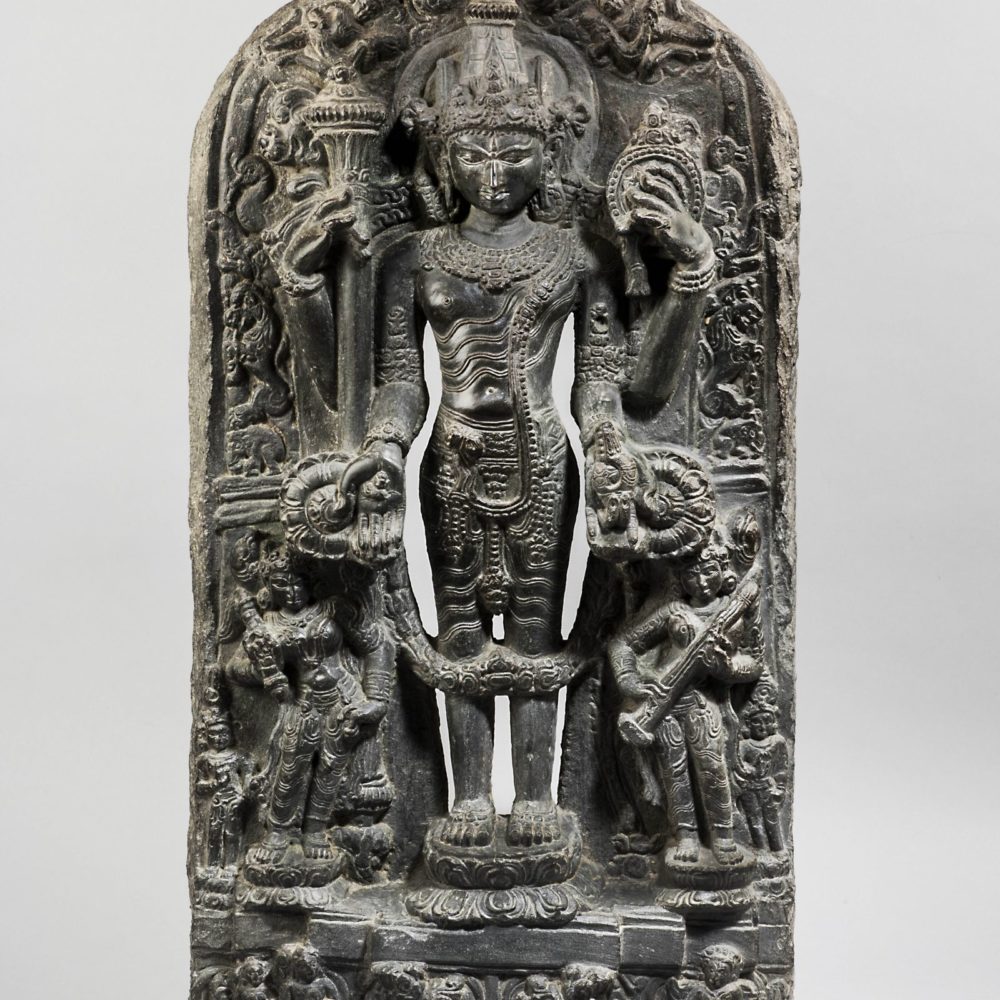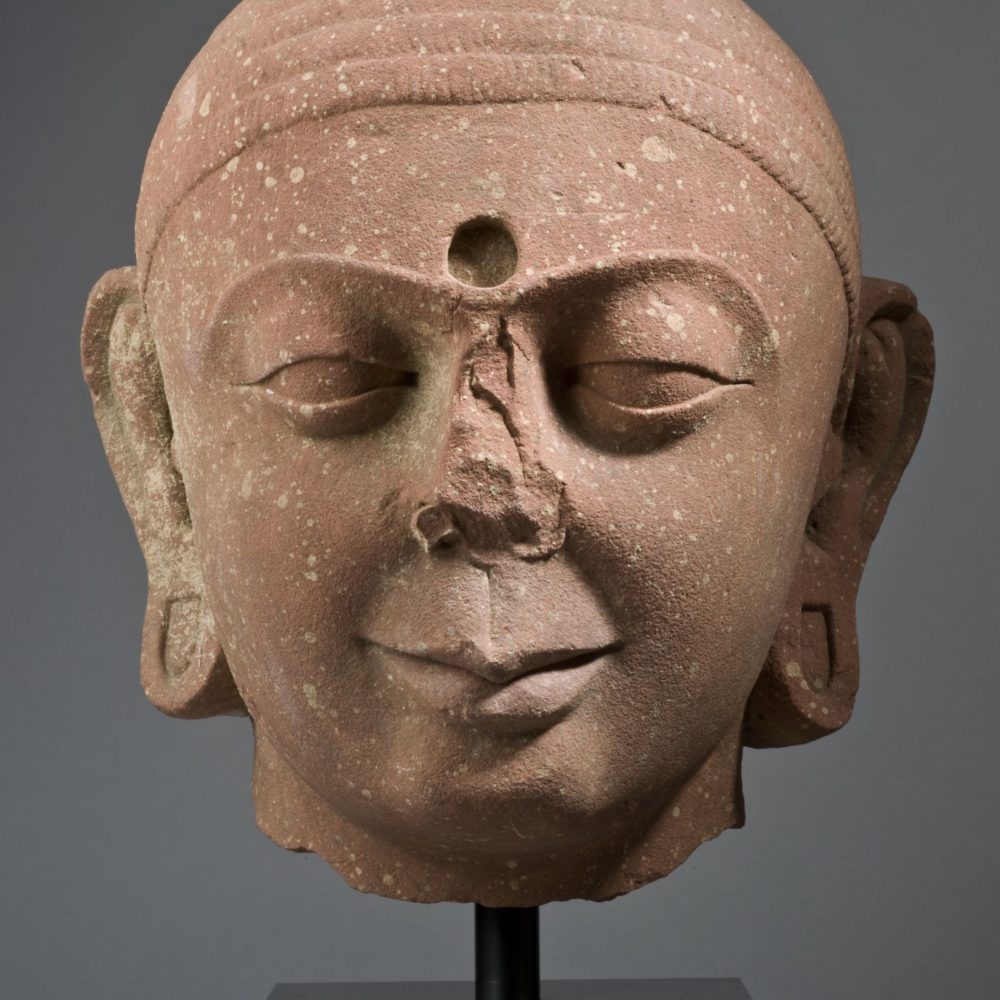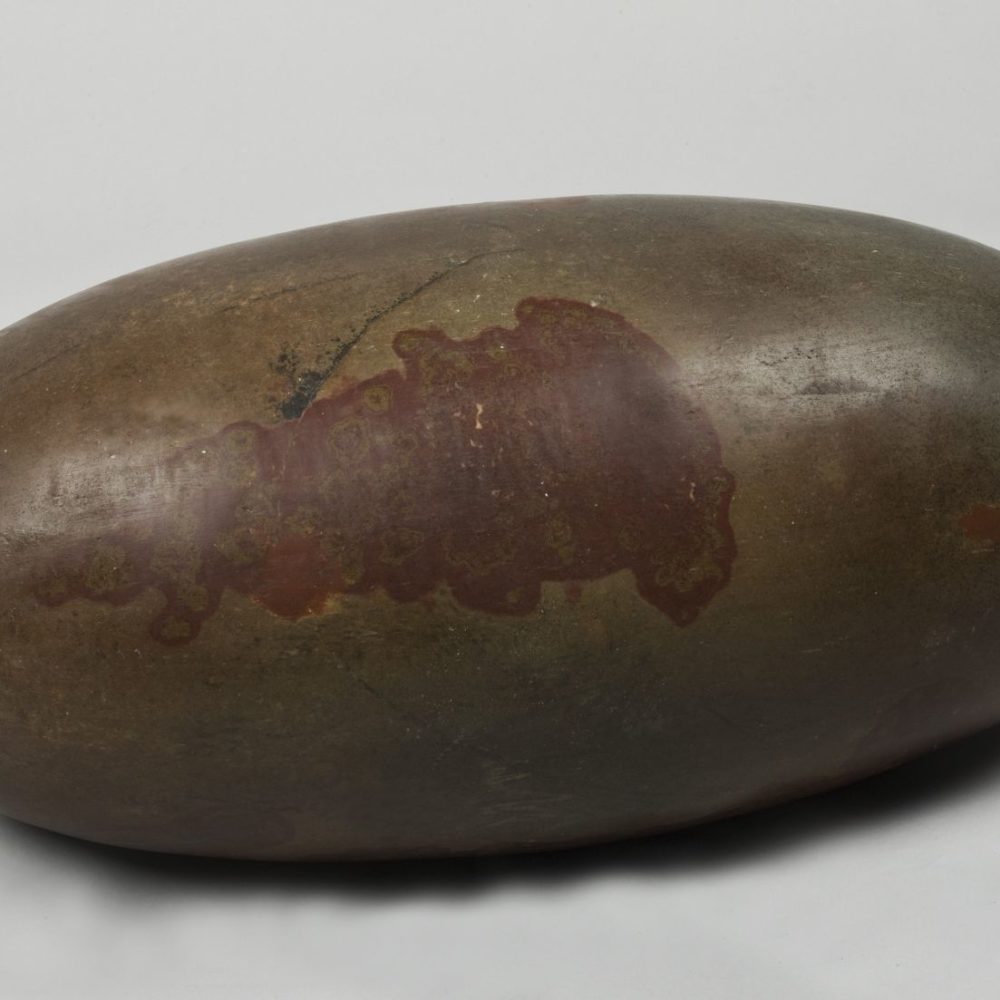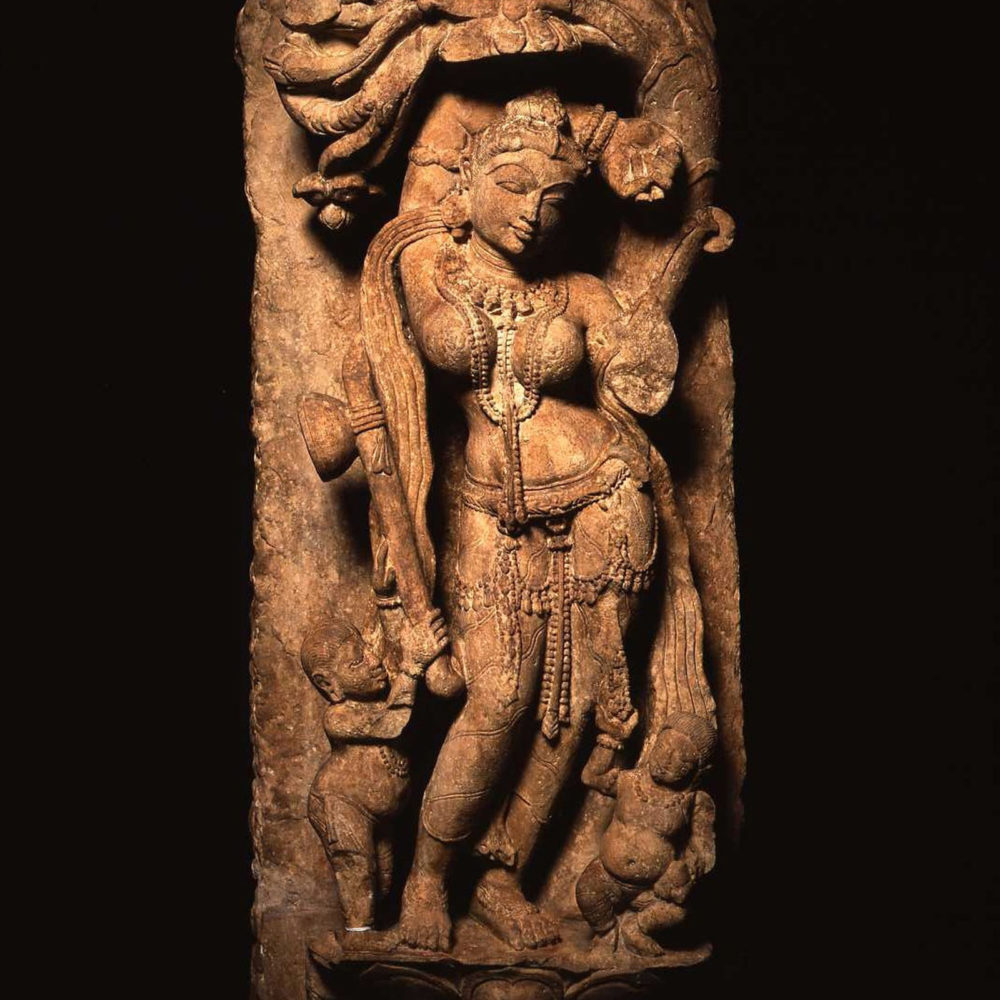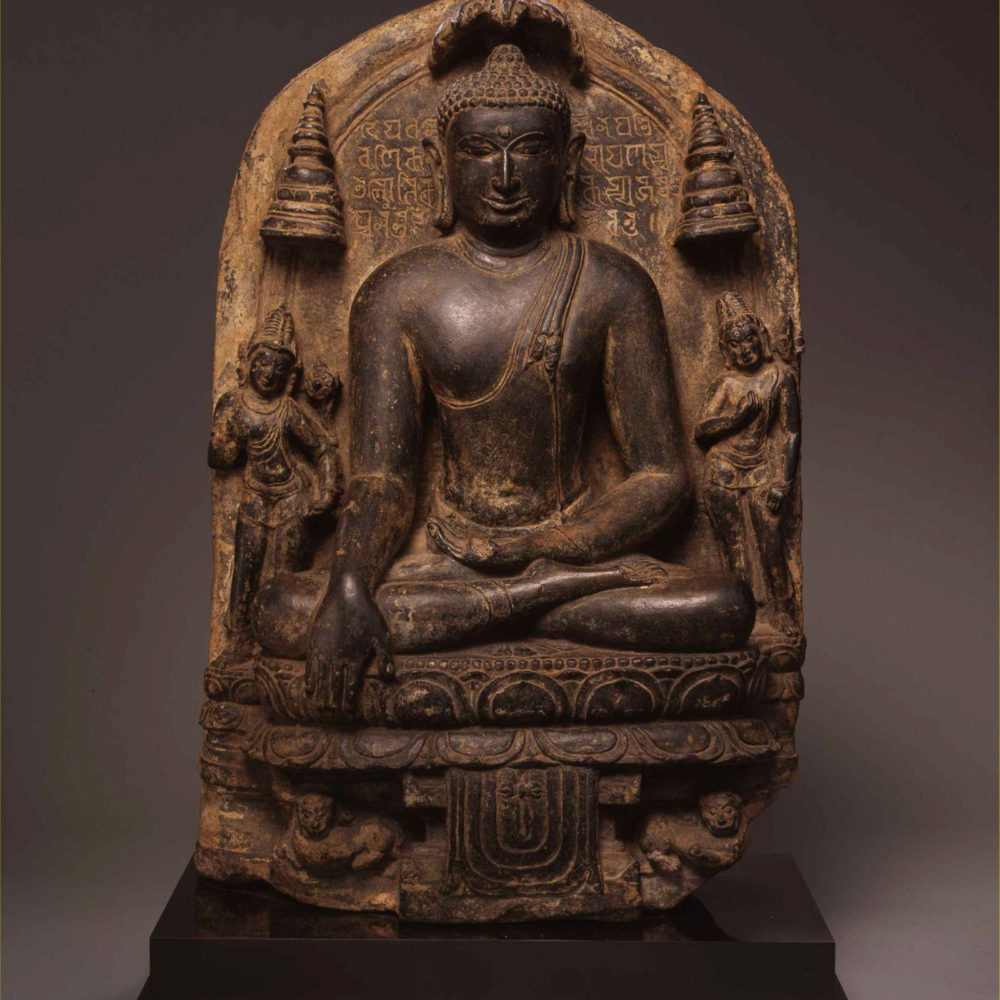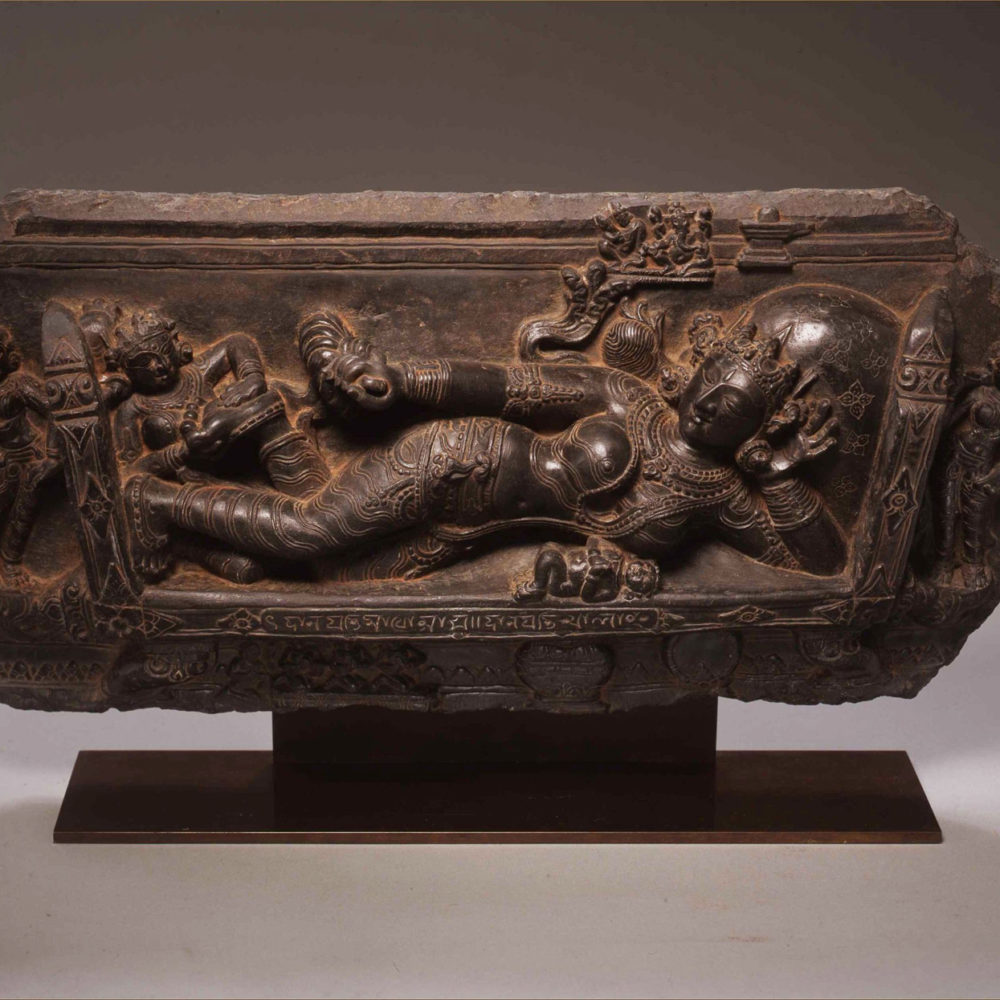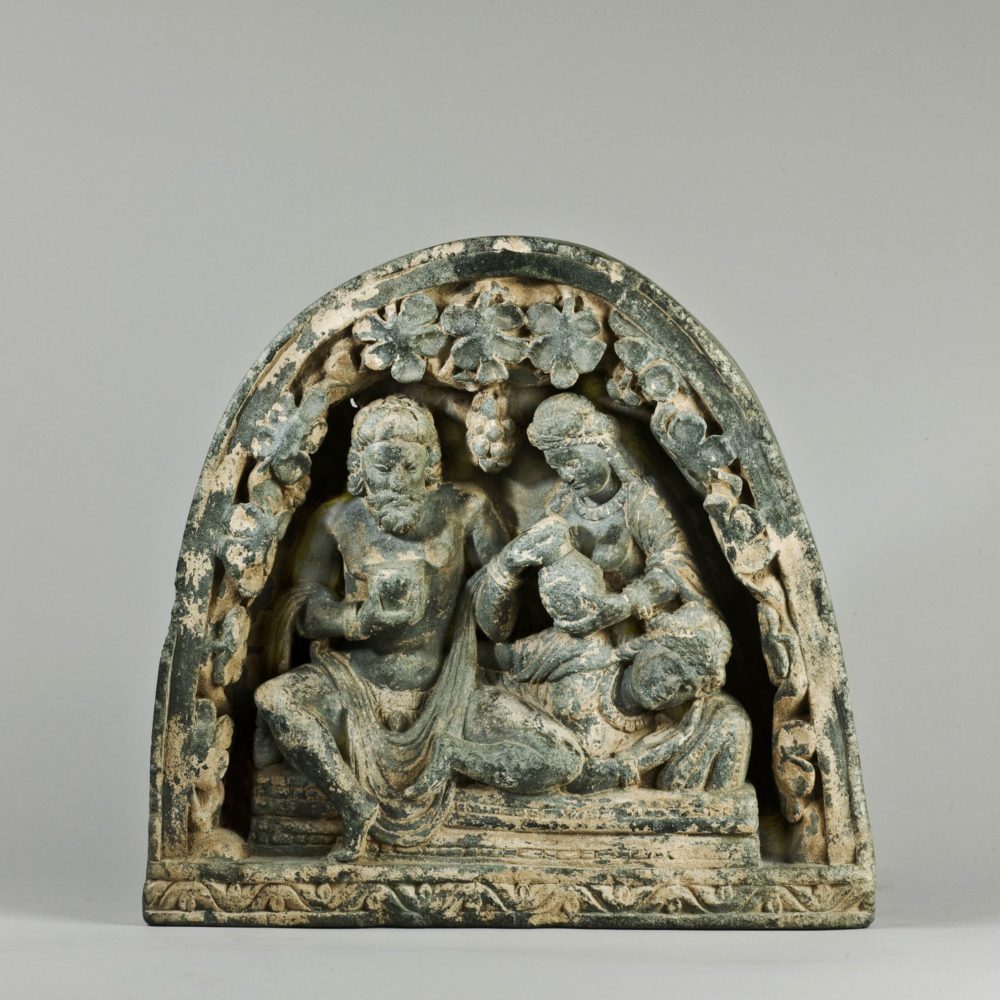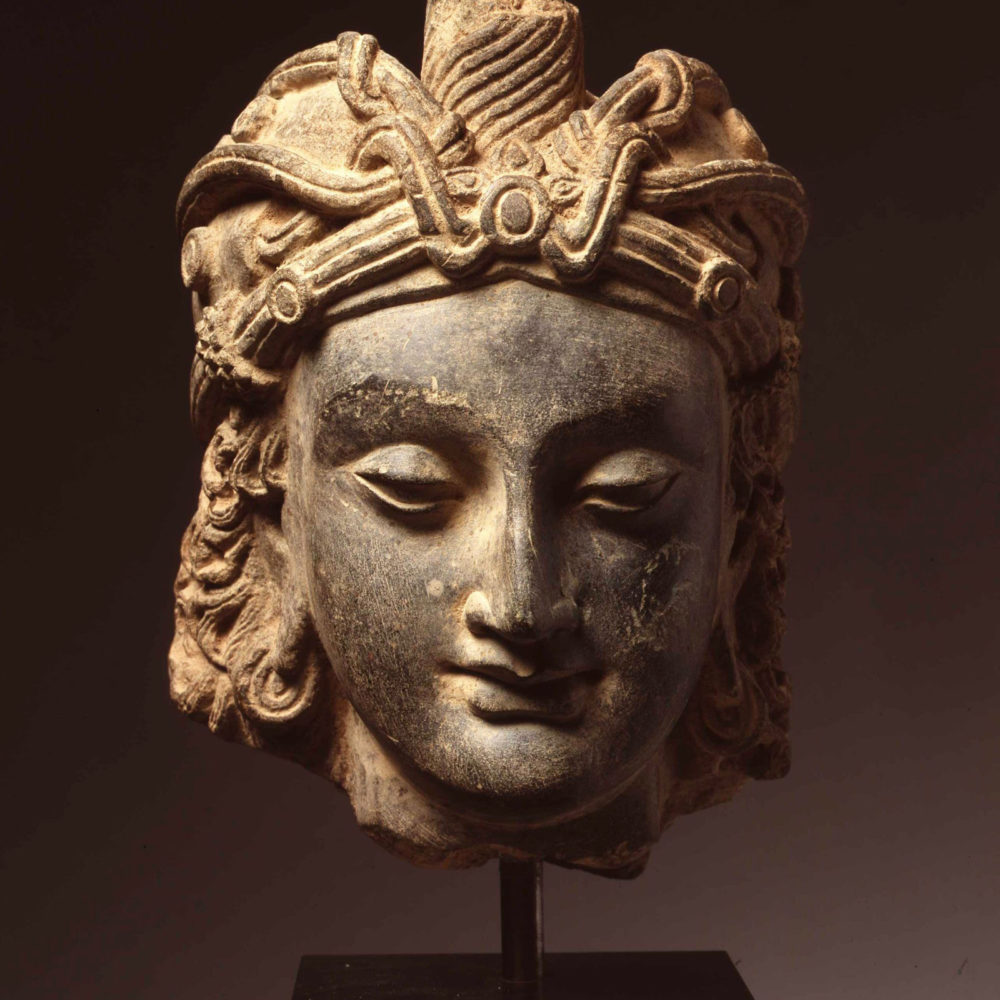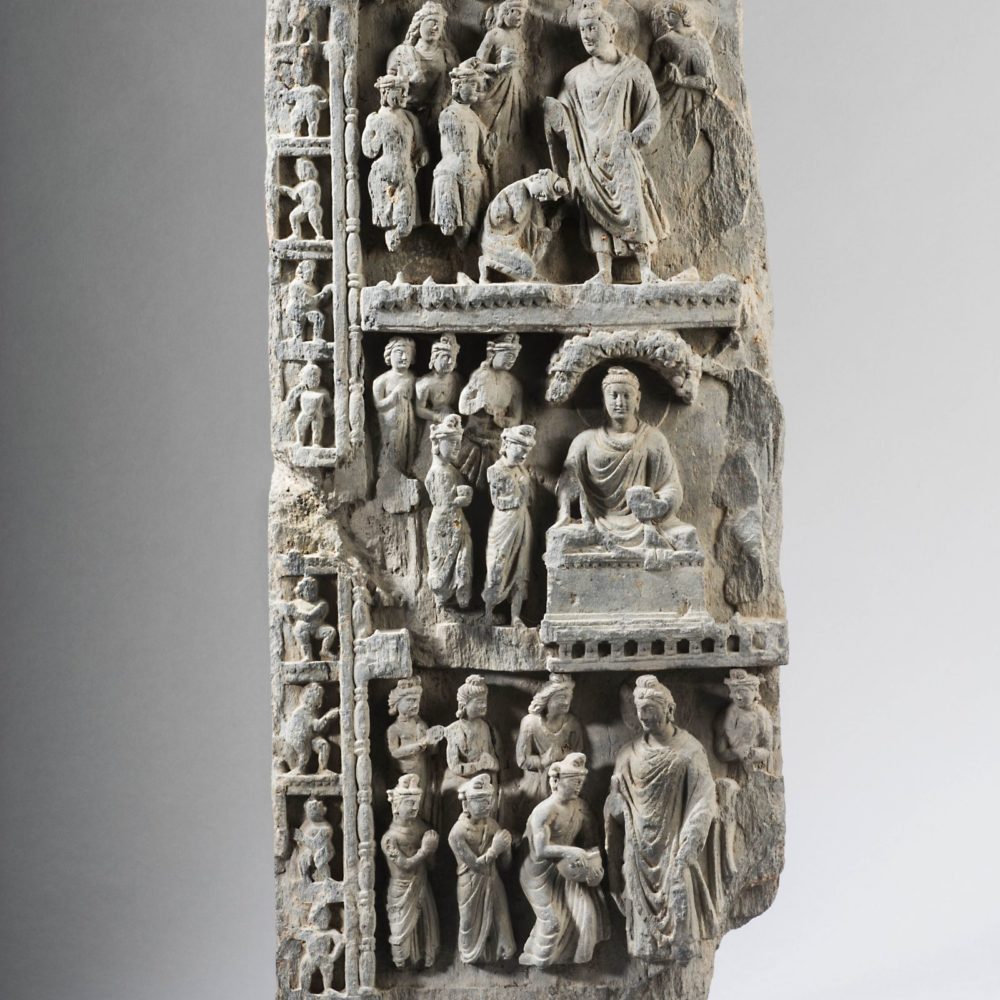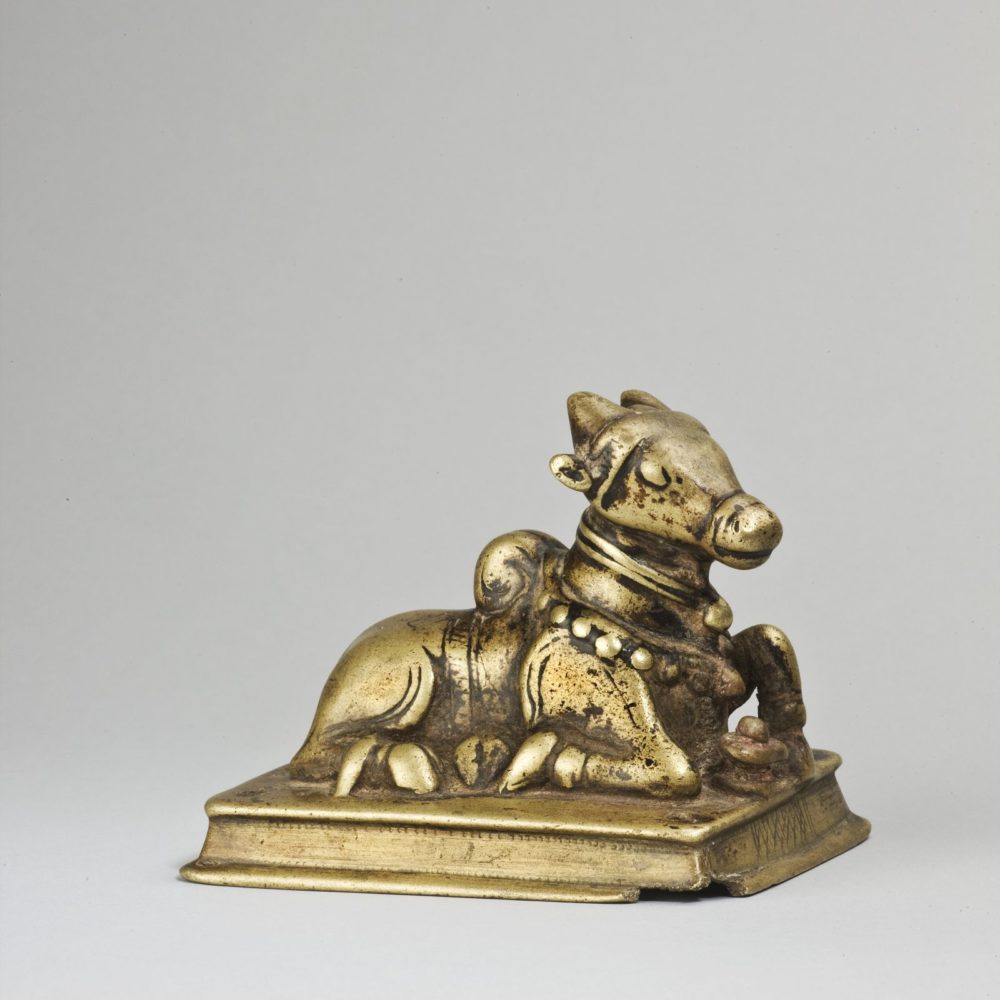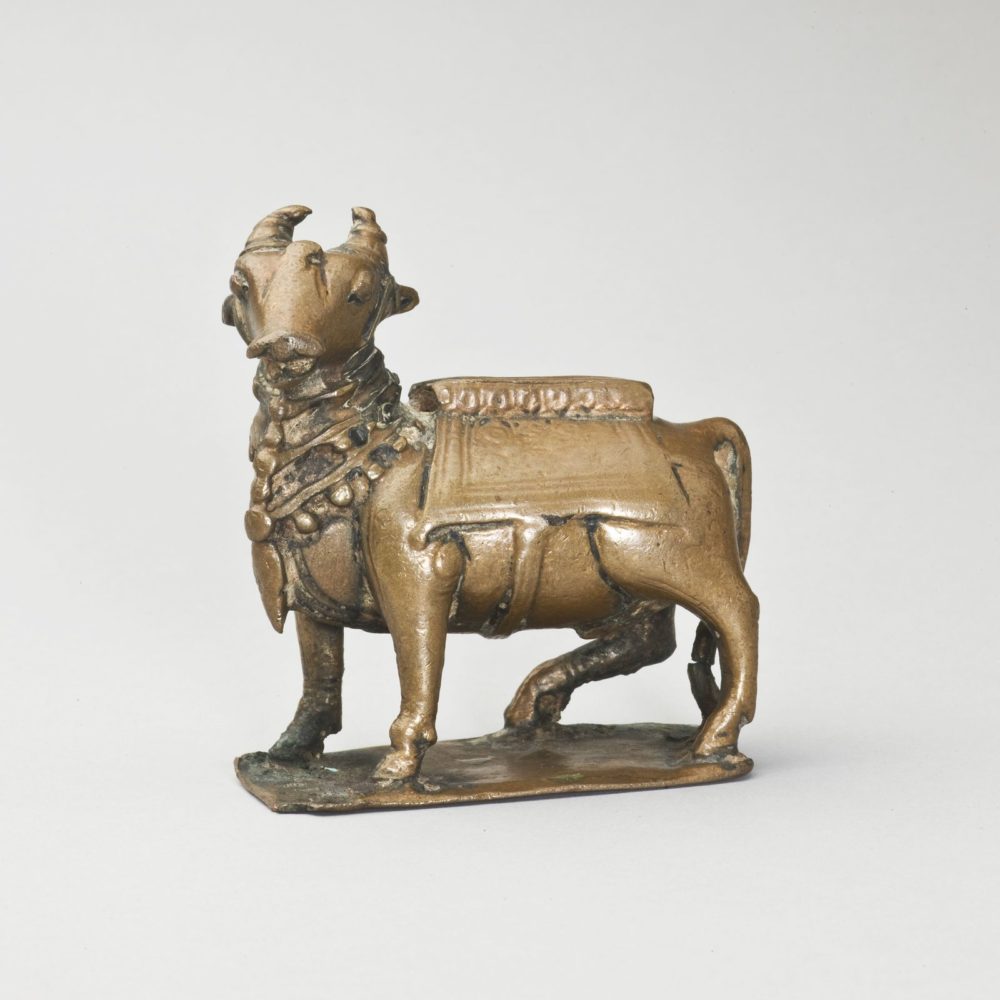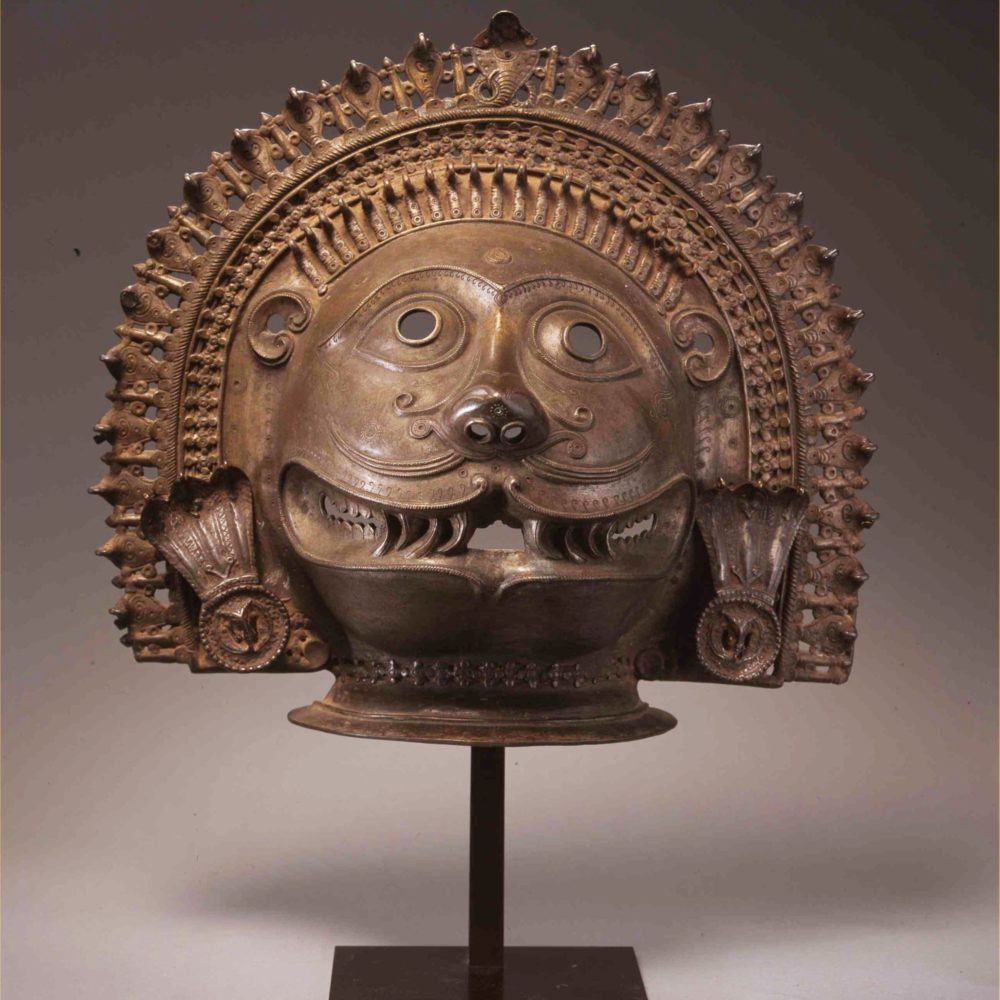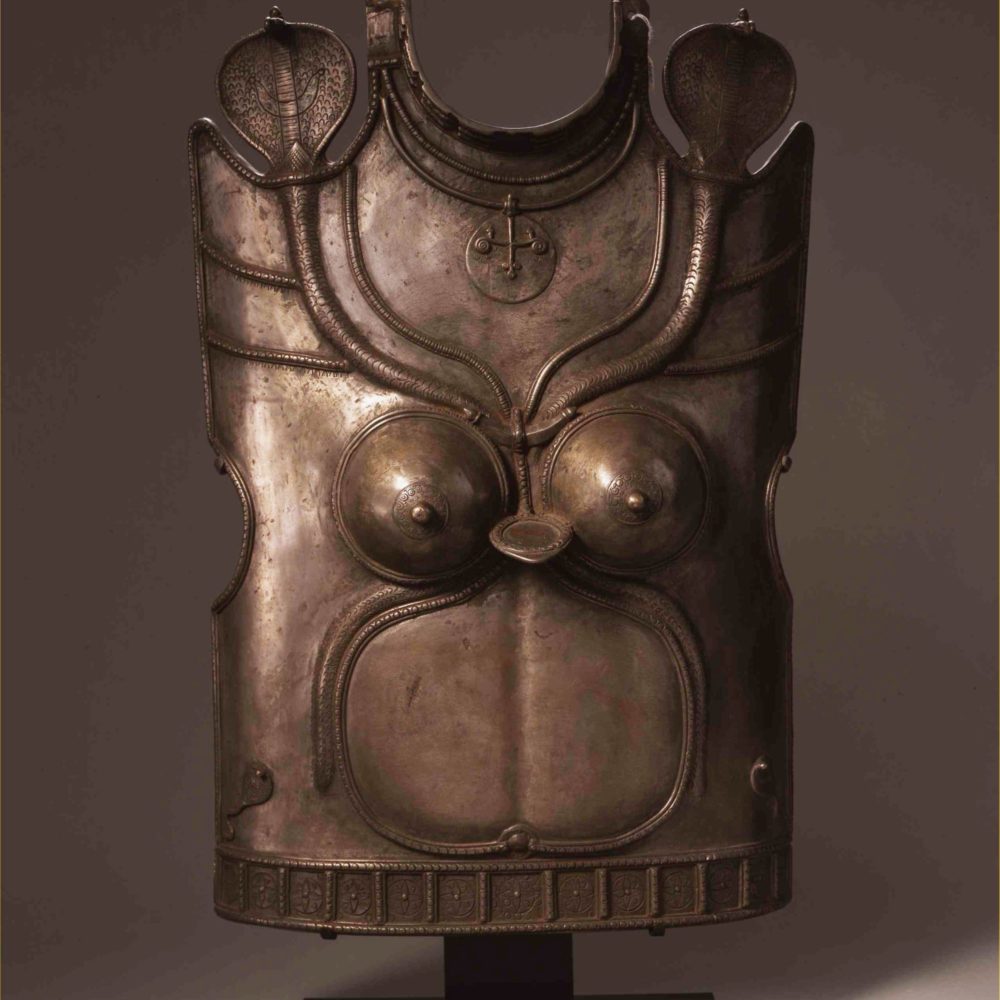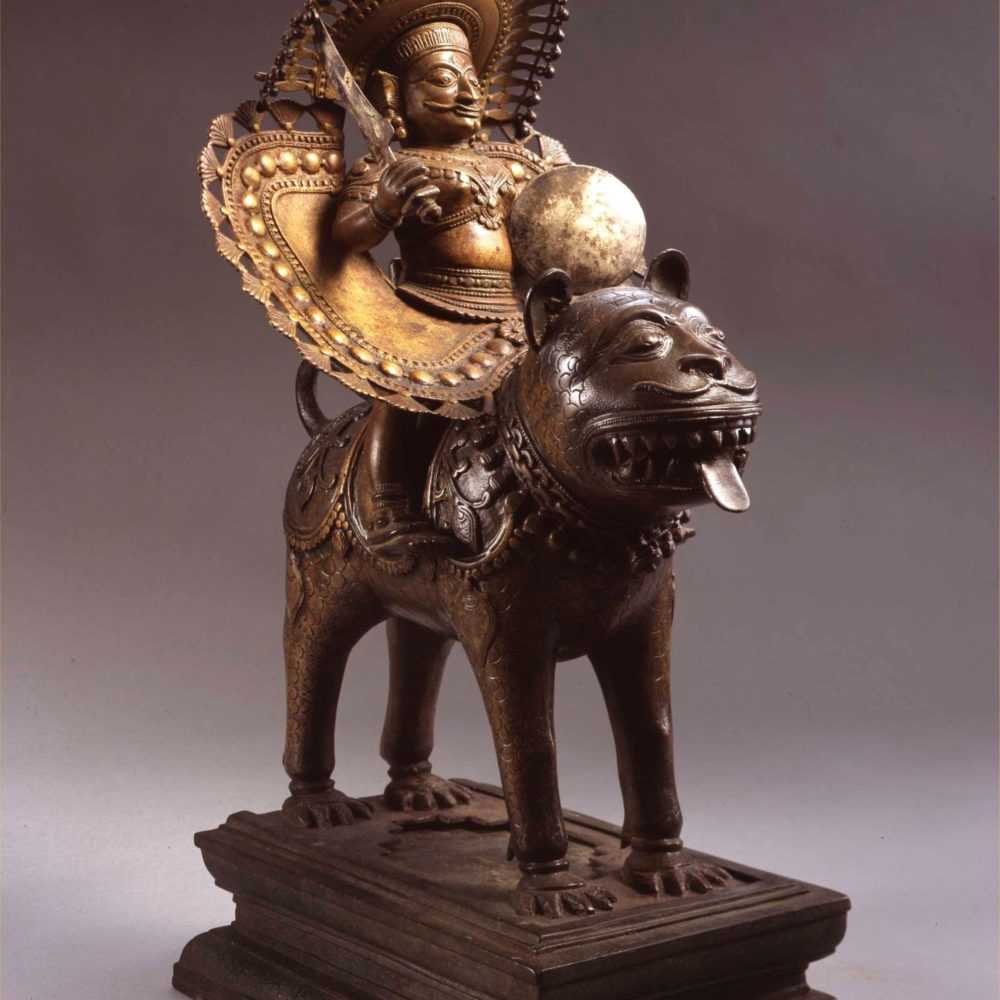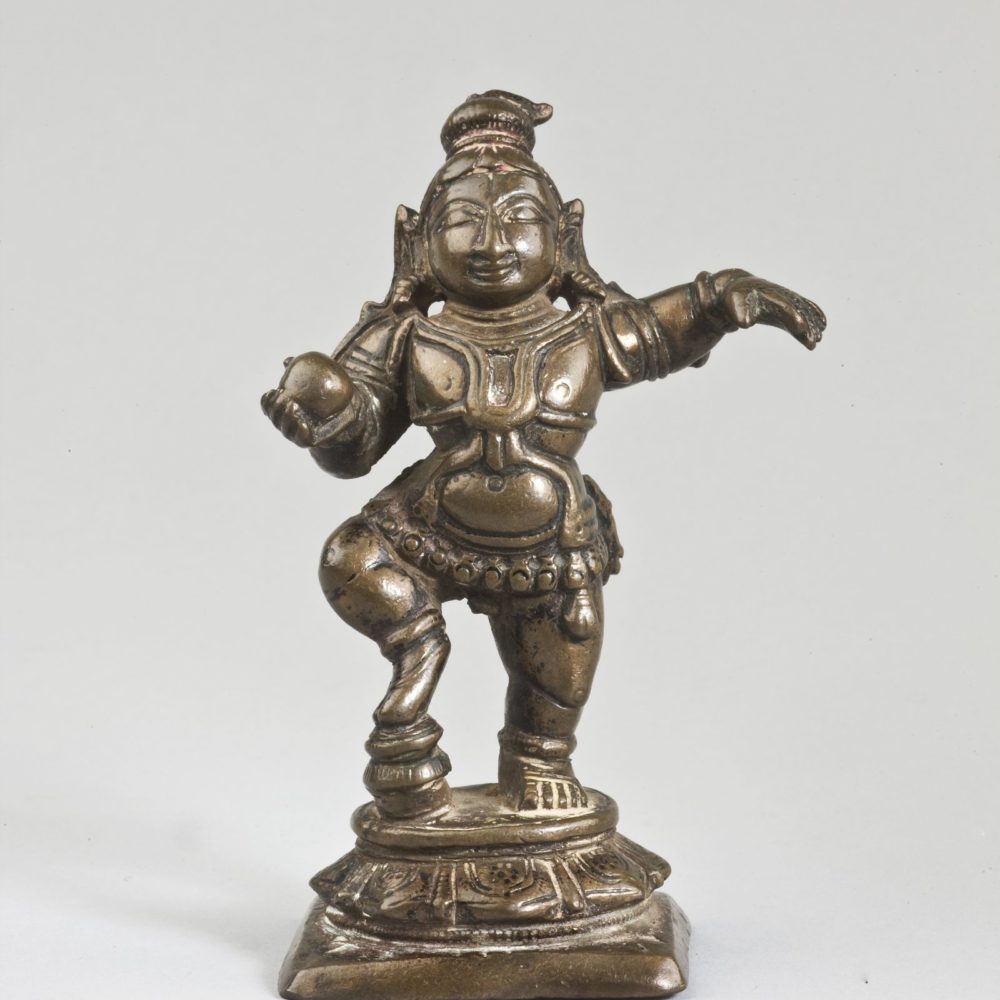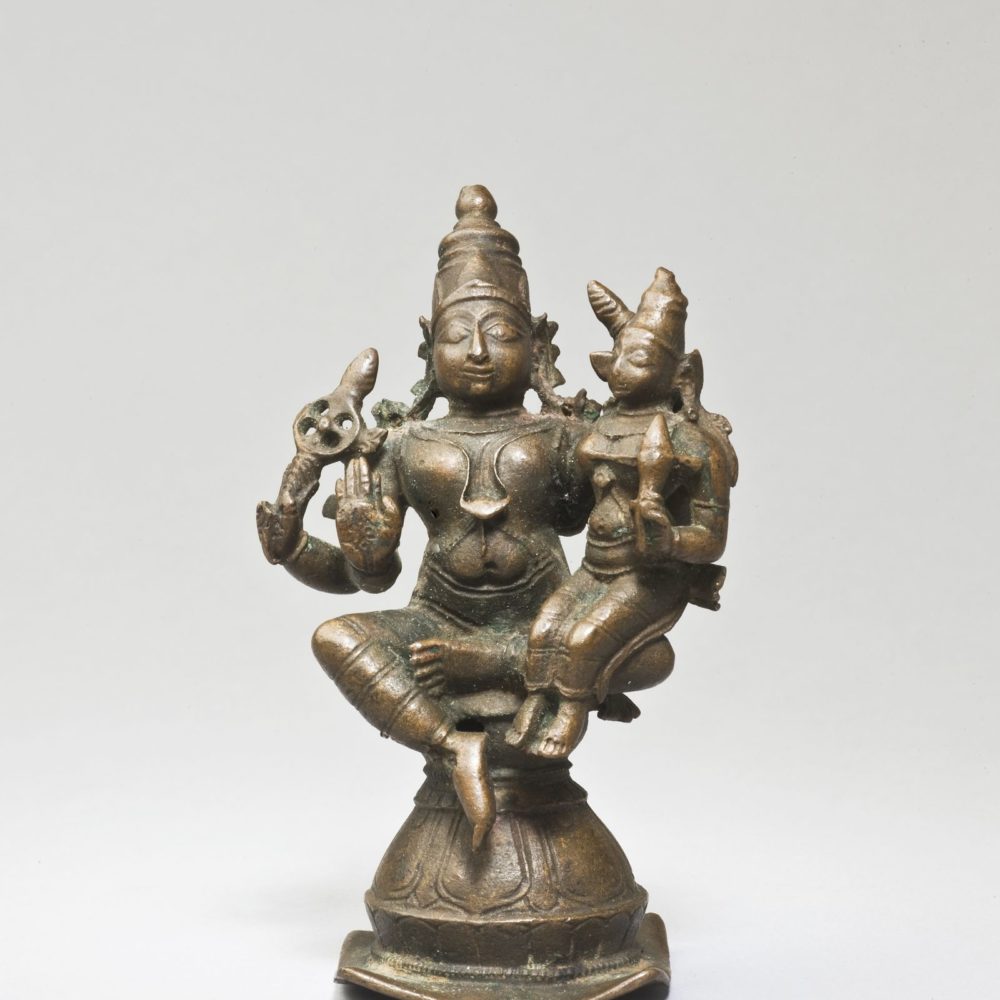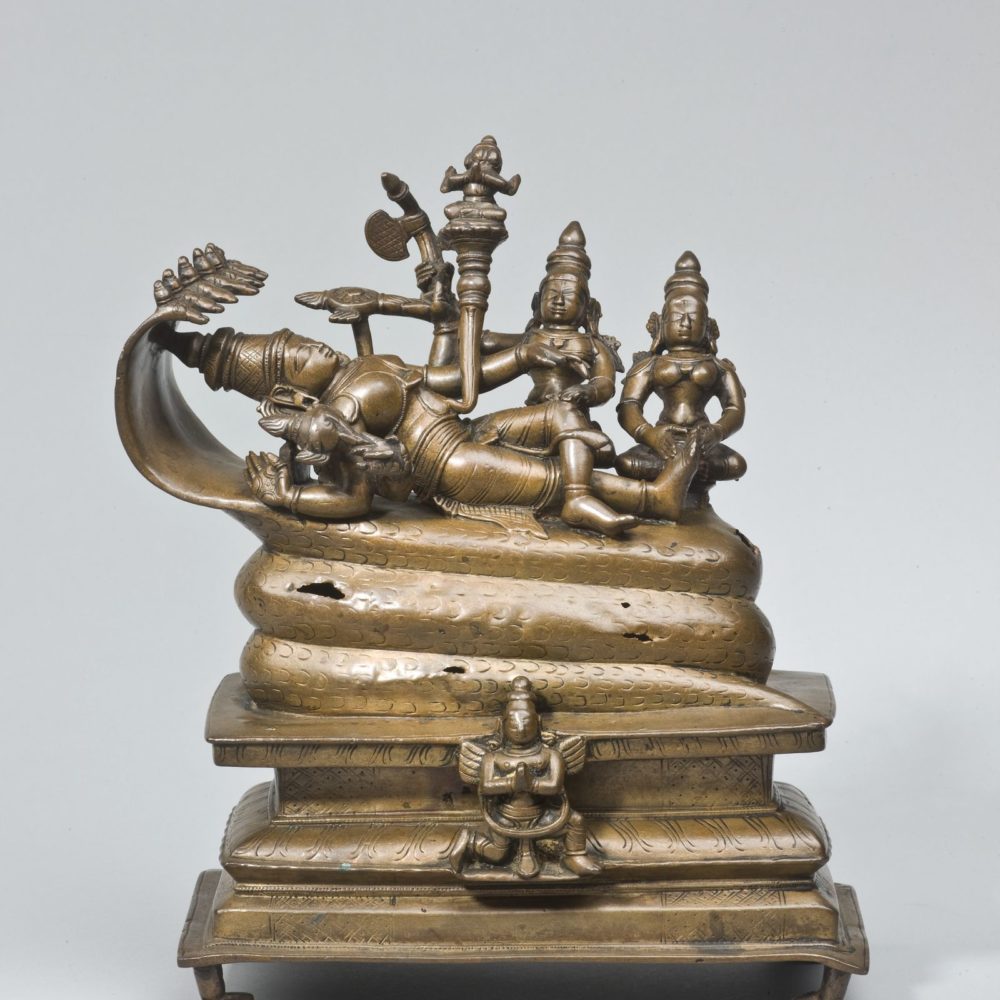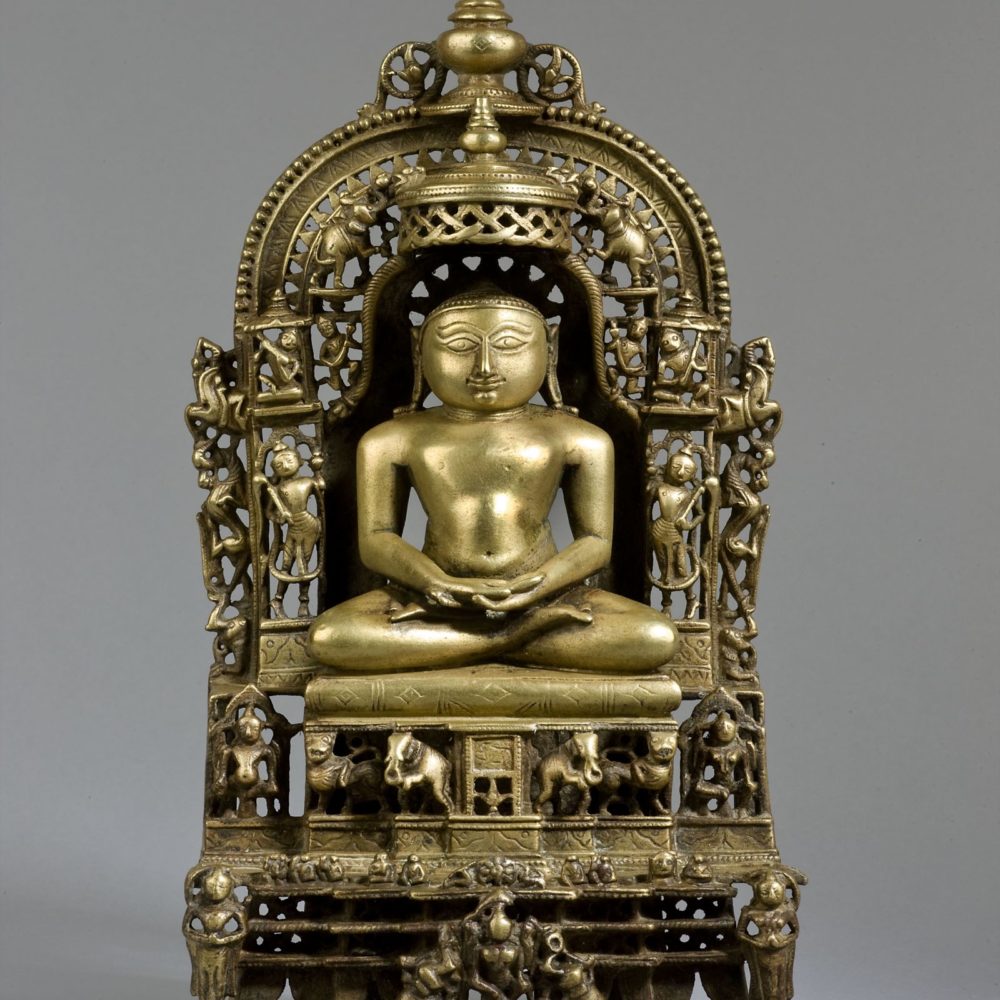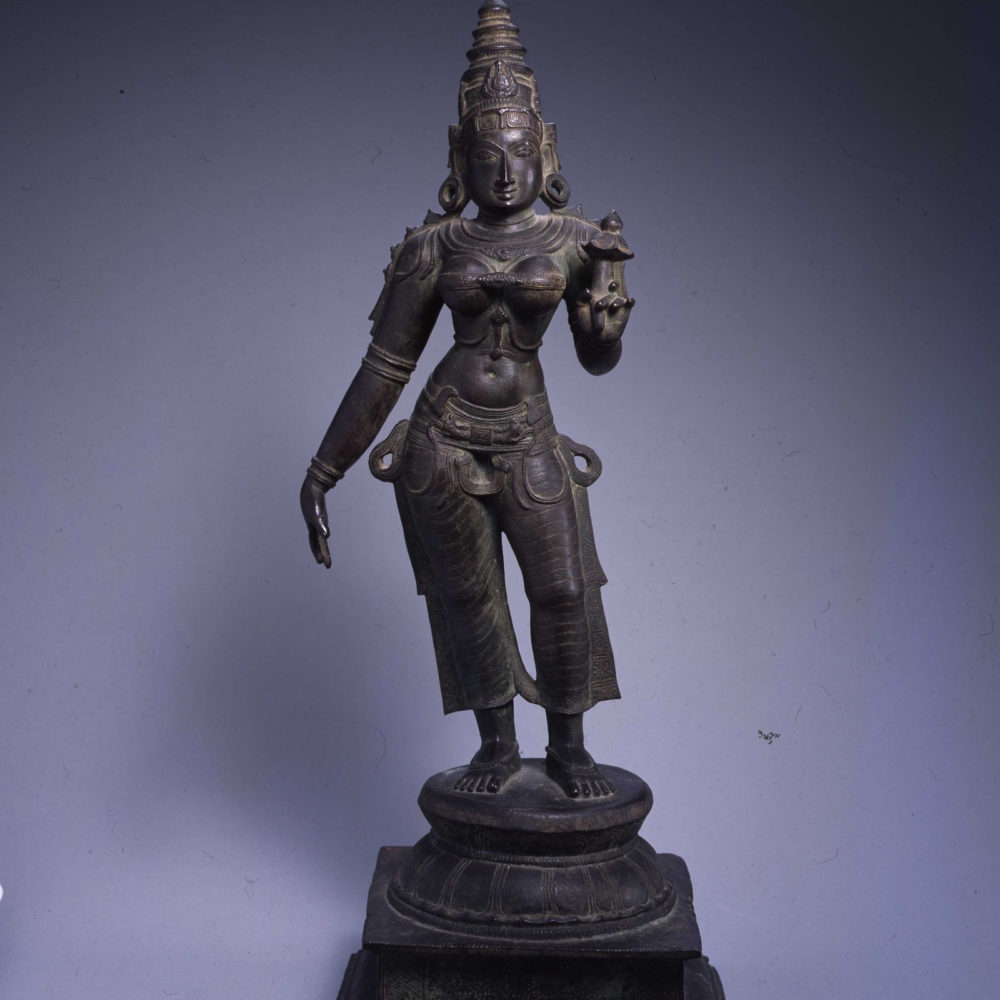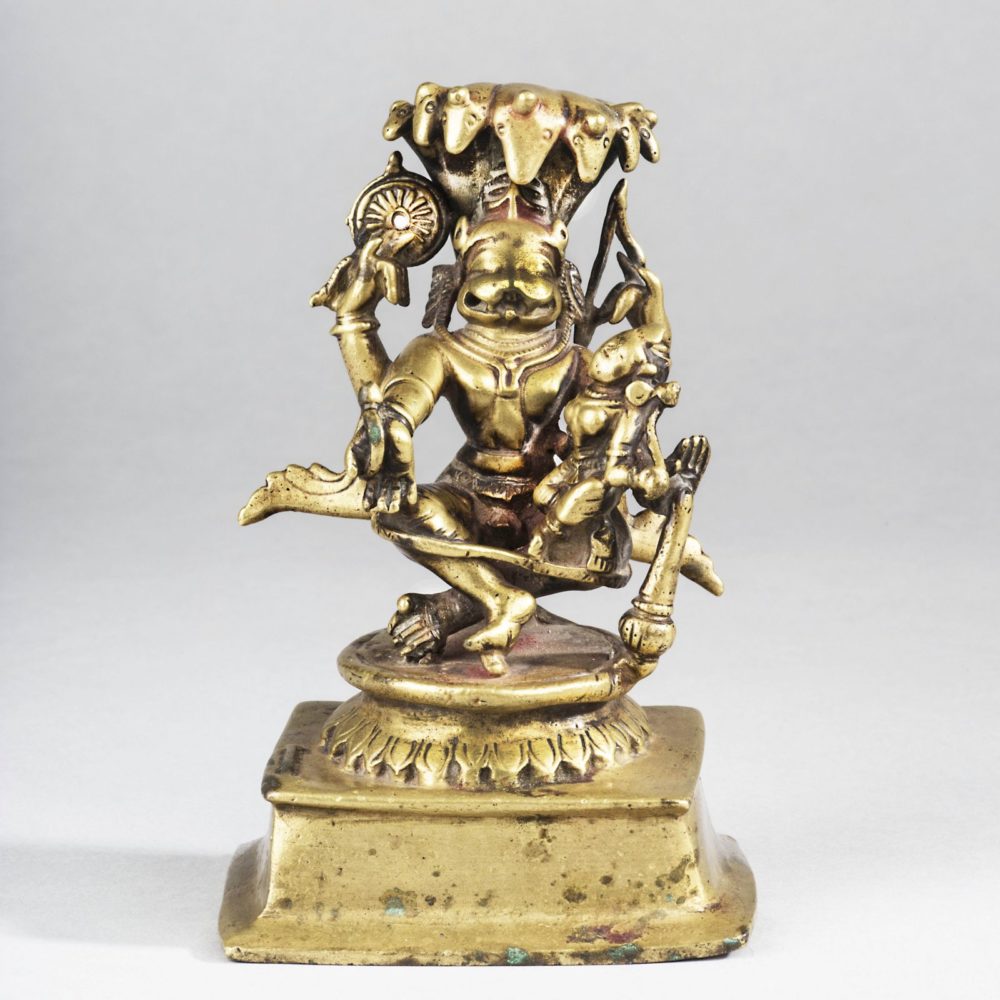Chola Standing Figure
10-11th century, India
Height: 51 cm Width: 16.3 cm
The expert craftsmen of the Chola period produced figures of the goddess Uma, as she is addressed in Tamil Nadu, that are among the most sensuous images in the corpus of Indian art. With a curvaceous figure and wearing the ornaments of a queen, the goddess is the embodiment of the ideals of Indian beauty. In Tamil poetry of the bhakti saints, Uma’s exquisite beauty is espoused through metaphors of the beauties found in nature: her thighs are tapered like the plantain tree, her waist is slender like a creeper, her breasts as if golden vessels filled with the nectar of the gods, and her elegant gait expressed through the tribhanga evocative of a peacock.
Unusual and especially beautiful details in the present work include the goddess’ long dhoti with its pattern of circular motifs. Similar patterns seen in earlier works, for example that of the Uma in the Cleveland Museum of Art, in which the dhoti of the Uma dated circa 950 is decorated with bands of circles, perhaps stylized lotuses in cross-section, alternating with bands of undulating vine motifs (see V. Dehejia, The Sensuous and the Sacred: Chola Bronzes from South India, 2002, p.123, fig.12). A figure of Sita from the Linden-Museum in Stuttgart dated to circa 980, shares the bands of circles in her dhoti, this time alternating with bands of triangular motifs, as well as similar treatment of the jewelry, notably the elaborate necklace and jeweled harness (see ibid., 2002, p.191, fig.47). With both the present work and the Linden Sita, the artist has emphasized the attenuation of the waist which gives way to rounded hips and lithe legs. Combined with elongated graceful arms and pert breasts, the goddess is the embodiment of youthful femininity.
Provenance
Collection of C.T Loo, Paris, acquired by 1938. Collection of Dr. W.M. Houwing, Amsterdam, acquired by 1940. By descent to the present owner.

